This is the Ponte della Maddalena (Bridge of Mary Magdalene) across the Serchio river in Italy, also known as Ponte del Diavolo (Bridge of the Devil). We visited last year on our way to Lucca and I was reminded of it again recently when it appeared in Il Racconto dei Racconti (Tale of Tales), a magical film shot in spectacular locations all over Italy. It prompted me to go looking for more mementoes.
There were lots. I was greedy for photos. Many had already appeared in previous posts (A Walk Along The Promenade, A Walk Along The Walls, A Walk Around The Village, Another Look At Lucca, Florence At First Sight, Quercione, Barga & Beyond, Another Look At Florence, Montefegatesi, San Gimignano, Candalla). But I couldn’t let any go to waste, so here’s the rest.
In Forte dei Marmi we saw a poster for a Saul Steinberg exhibition but we couldn’t find the gallery.
In Carrara we found a marble cathedral at the foot of a marble mountain,
where even the cars are made out of marble.
※
On a return trip to Forte dei Marmi we finally found the exhibition
Aldo Buzzi & Saul Steinberg: a friendship between literature, art and food.
There was a nice video in which they both talked lovingly about spaghetti and about each other.
It was in Italian but we got the gist.
Everyone… is unique; but some are more so than others, and Saul Steinberg was very much so.
Robert Hughes
Aldo Buzzi e Saul Steinberg: Un’amicizia tra letteratura, arte e cibo
※
In Bagni di Lucca we took the mountain road up to Bagni Caldi and the Chiesa di S. Martino.
※
In Collodi we waved at Pinocchio and went for a walk in the park.
The lower district of Collodi is a rather untidy little place, rendered less pleasant by a one-way system along its two main streets. In this disappointing setting the Baroque gardens of Villa Garzoni nevertheless remain spectacular. Laid out on this very steep hillside around 1650, these terraced gardens are considered one of the most important creations of the Baroque period in all of Italy.
Blue Guide Tuscany: Alta Macadam
Access is usually through a gate on the main road, but the garden was designed to be entered through the wood adjoining the villa, so that the visitor would emerge from the wilderness into this precisely orchestrated landscape. Maximising the theatrical possibilities of the steep slope, it deploys the full resources of the Baroque garden: circular fountains, topiary animals, patterns of flowers and coloured stones, a water staircase, a zigzagging cascade of steps and terraces, and terracotta figures in every corner. There’s also a butterfly house, home to a huge variety of tropical species…
The Rough Guide to Tuscany & Umbria
※
In Manarola we watched daring young men throw themselves off jagged rocks into the sea.
※
In Pistoia we found pre-packed olive trees ready to take away,
and in the market square there’s a miniature market square, a piccolo Piazza del Duomo.
We followed a trail of white horses to the Marino Marini museum.
The Museo Marino Marini shows a wide selection of work – sculptures, drawings, paintings – by Pistoia’s most famous modern son. Marini found an early influence in the realism of Etruscan sarcophagi, expressed in the sculptures of horses and riders that he produced throughout his life.
The Rough Guide to Tuscany & Umbria
Alongside the museum, in the Cappella del Tau, amidst a chaos of fourteenth-century frescoes,
there are more sculptures. But we got there too late, the chapel was closed for the afternoon.
※
In the house where we stayed there hung a lopsided engraving of the Tower of Pisa.
It appeared to be vertical, so we needed to check.
It was in a bad way, leaning chronically. Many of its visitors tried desperately to hold it up.
The Baptistery is the largest in Italy, and the plainness of the vast interior is immediately striking, with its unadorned arcades and bare dome. The acoustics are astonishing too, as is often demonstrated by the custodian.
The Rough Guide to Tuscany & Umbria
This is the lady who took our tickets as we entered. When she judged there were enough people inside she stood beside the octagonal font, and with a couple of perfectly pitched notes her voice filled the dome with a beautiful resounding echo.
The Camposanto… has been called the most beautiful cemetery in the world. It takes the form of an enormous cloister, which since the fourteenth century has housed a large array of Roman sarcophagi, some of which were reused for local dignitaries. Later tombs constitute a virtual encyclopedia of commemorative styles, ranging from pavement slabs that record the occupant’s name, dates and nothing else, to extravagances such as the monument surmounted by a woman identified as “The Inconsolable”. However, when Ruskin described the Camposanto as one of the three most precious buildings in Italy (with the Sistine Chapel and the Scuola di San Rocco in Venice), it was not its tombs but its frescoes that he was praising. Paintings once covered more than two thousand square metres of cloister wall, but bombs dropped by Allied planes on July 27, 1944 set the roofing on fire and drenched the frescoes in a river of molten lead, and masterpieces by Taddeo Gaddi, Spinello Aretino, Benozzo Gozzoli and others were all but destroyed.
The Rough Guide to Tuscany & Umbria
A
Leonardo Fibonacci
Insigne Matematico
Pisano
del
Secolo XII
The Campo dei Miracoli (Field of Miracles)… the ecclesiastical centre of Pisa is a stunning spectacle. Nowhere else in Italy are the key religious buildings – the cathedral, baptistery and bell tower – so perfectly in harmony. And the mere existence of such enormous structures on this spot is remarkable in itself, because beneath the pavements and the turf lies a soggy mix of sand and silt, whose instability accounts for the angle of the Leaning Tower and the lesser tilt of its companions: take a close look at the Baptistery and you’ll see that it’s inclined some way off the vertical, while the facade of the Duomo is a few degrees out of true as well.
The Rough Guide to Tuscany & Umbria



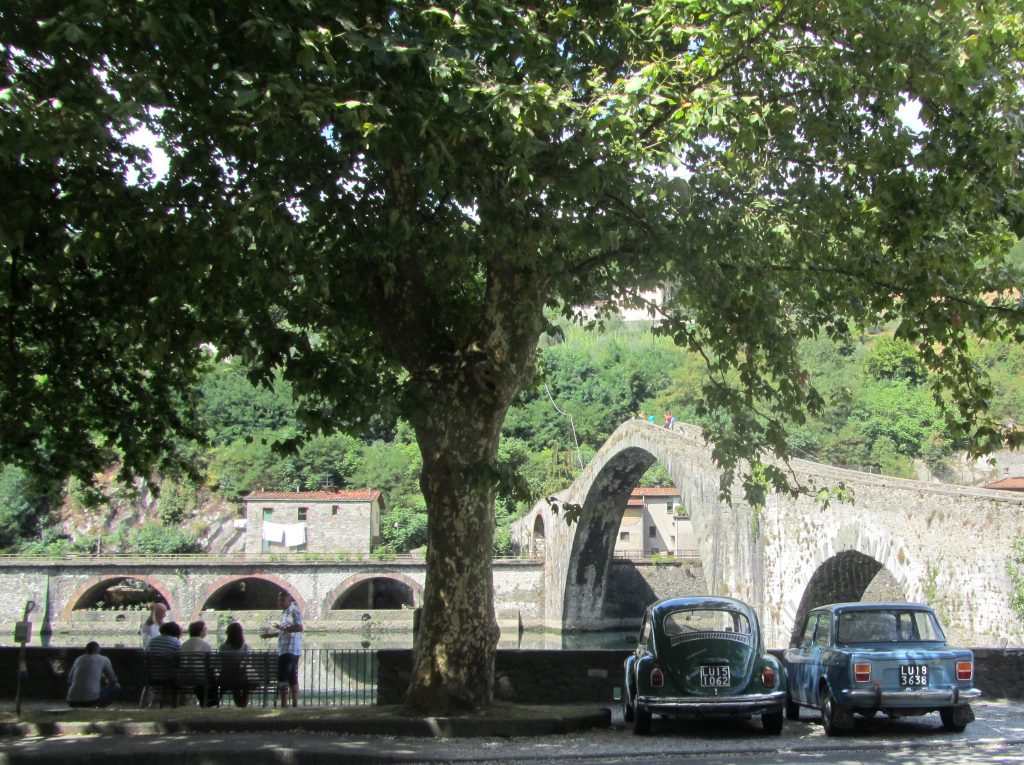
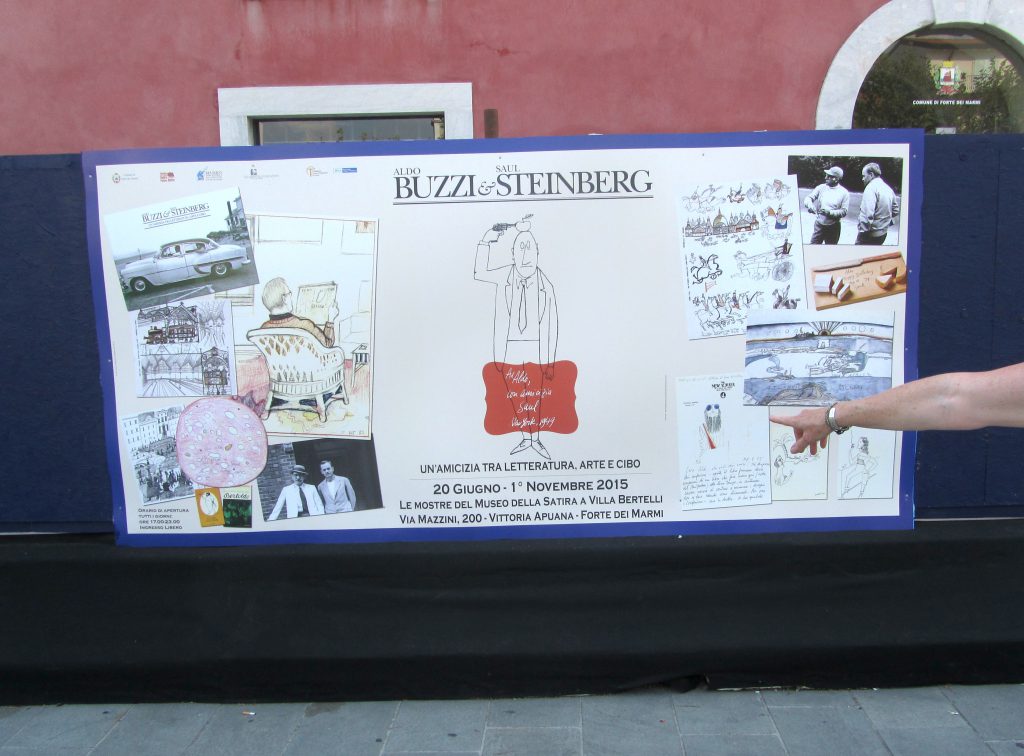
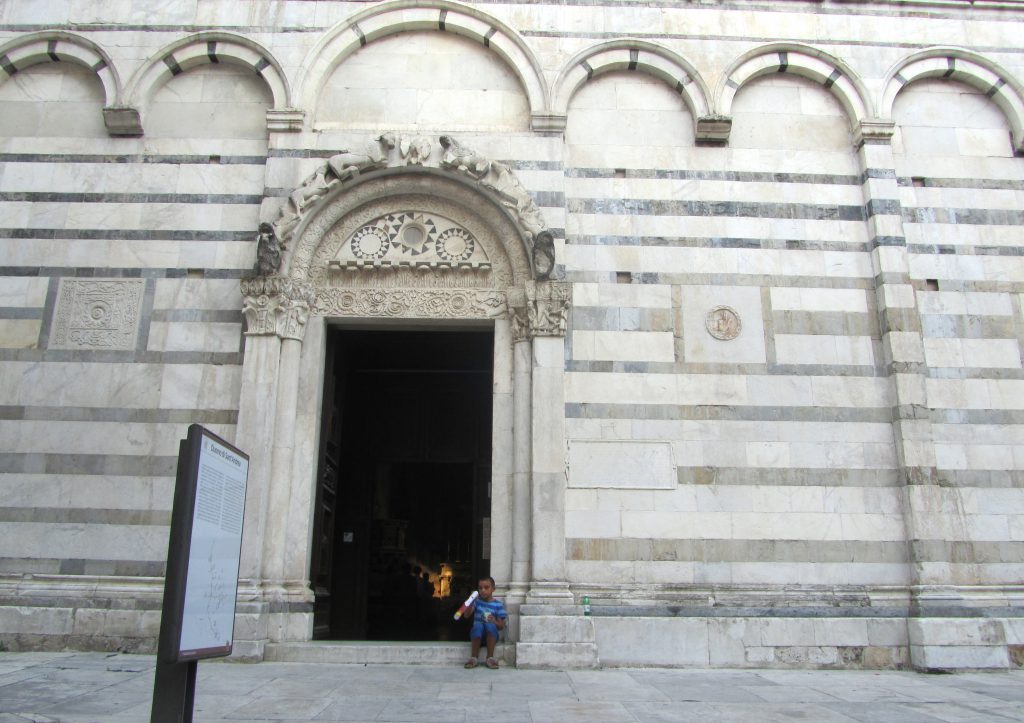
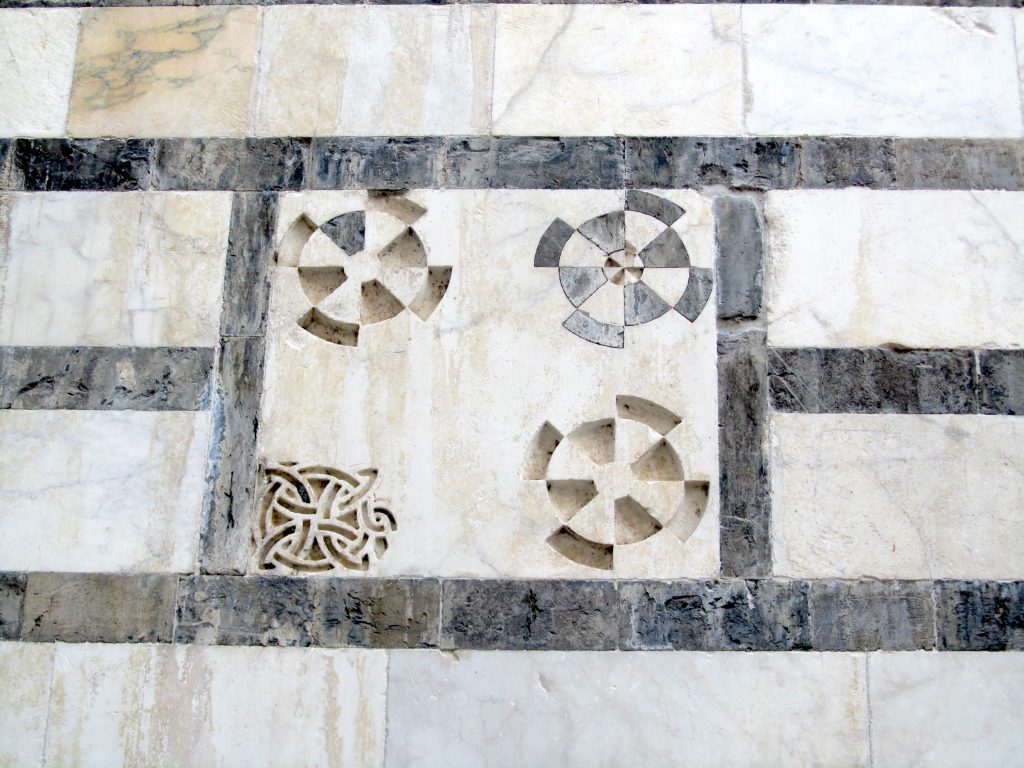
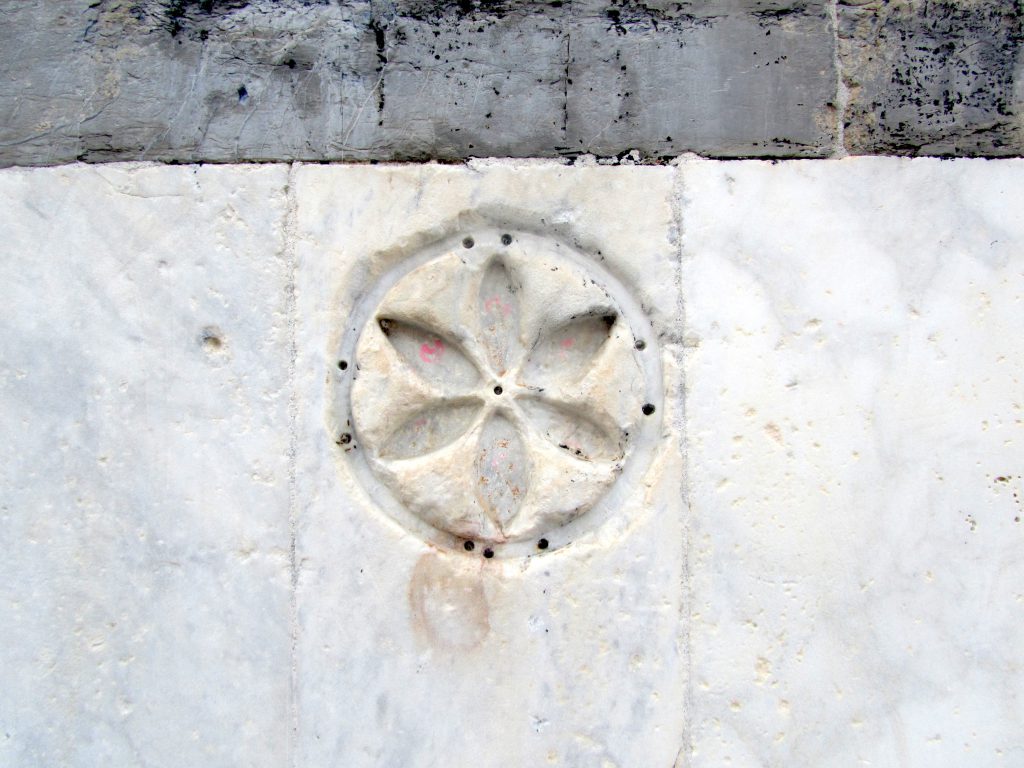
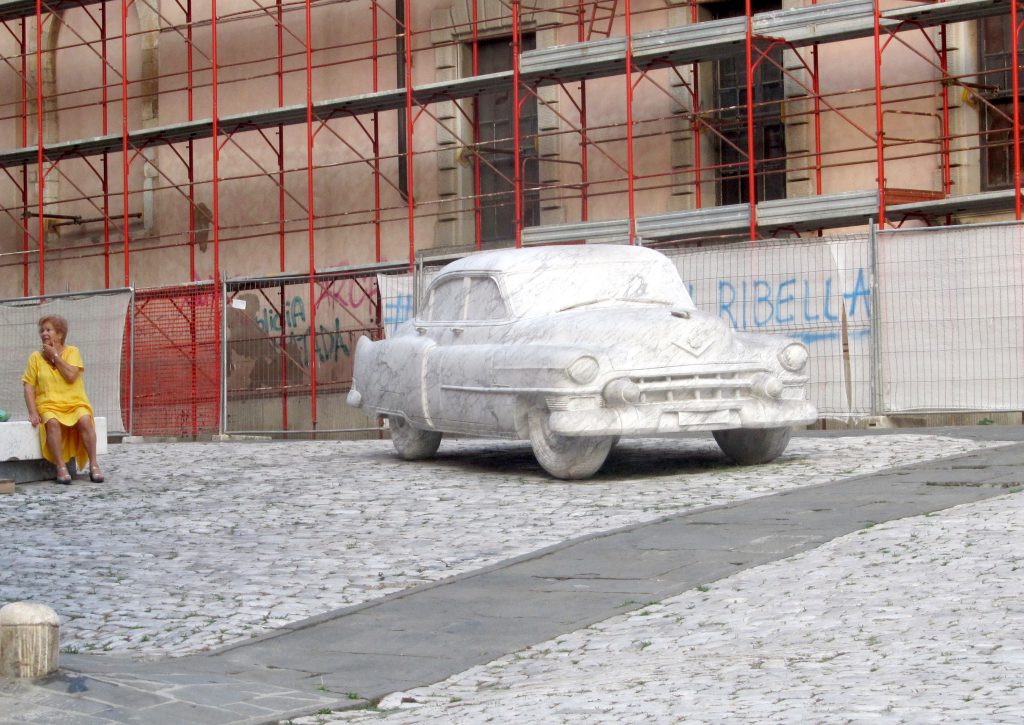
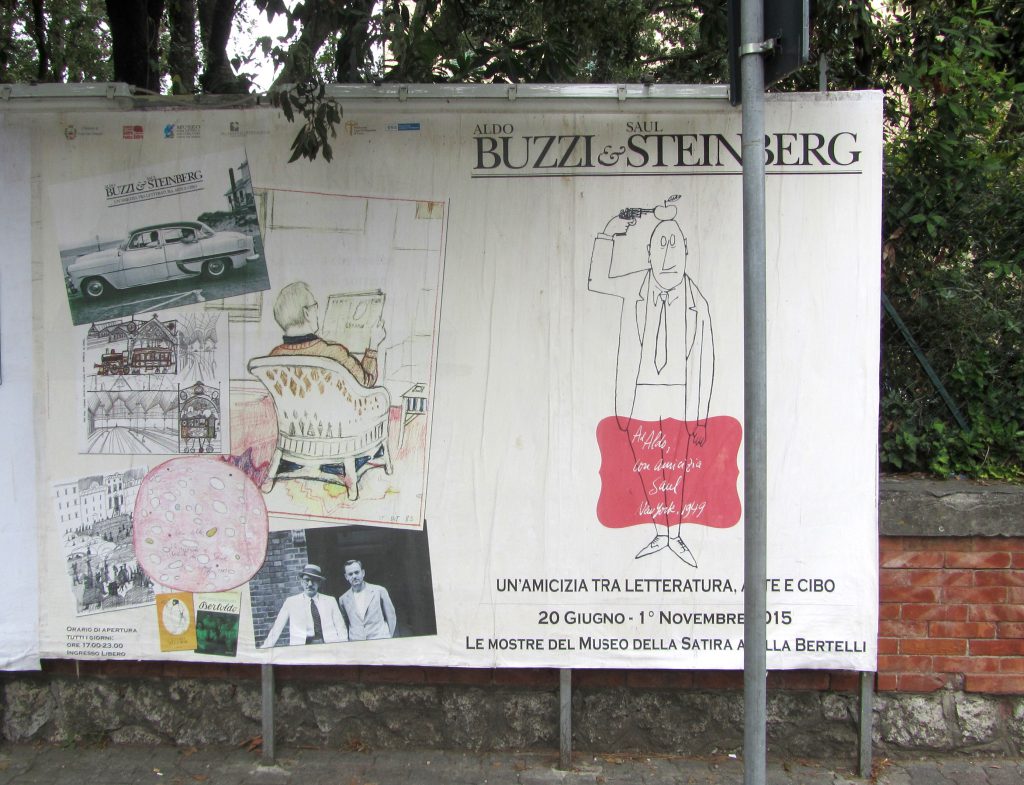
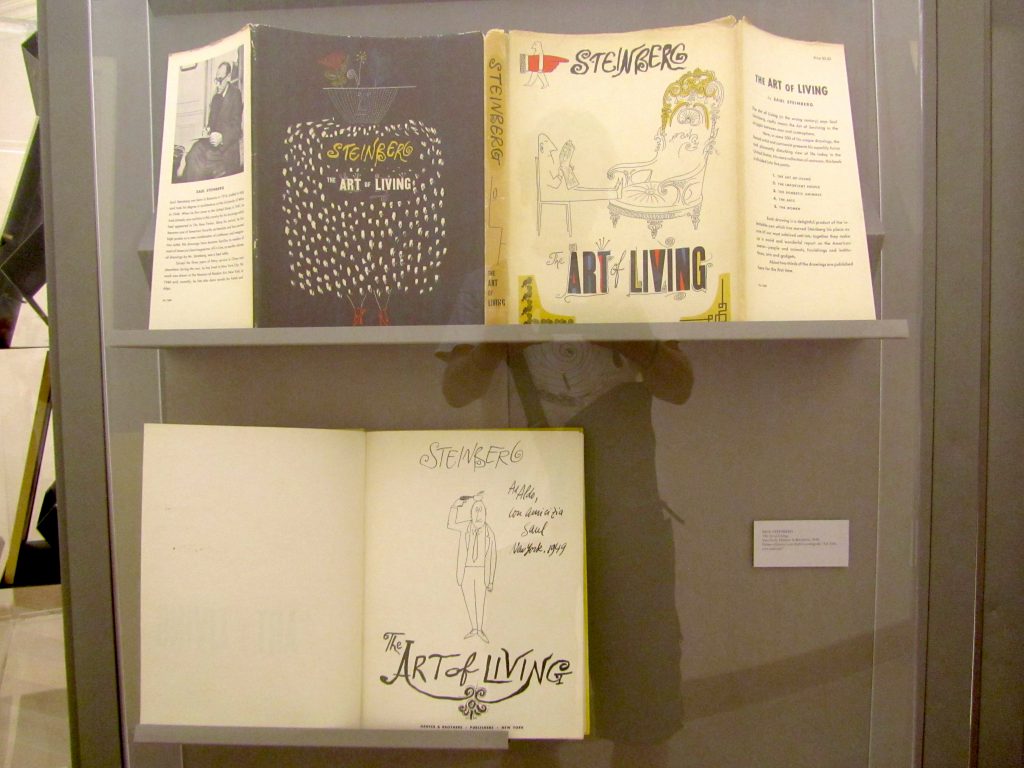
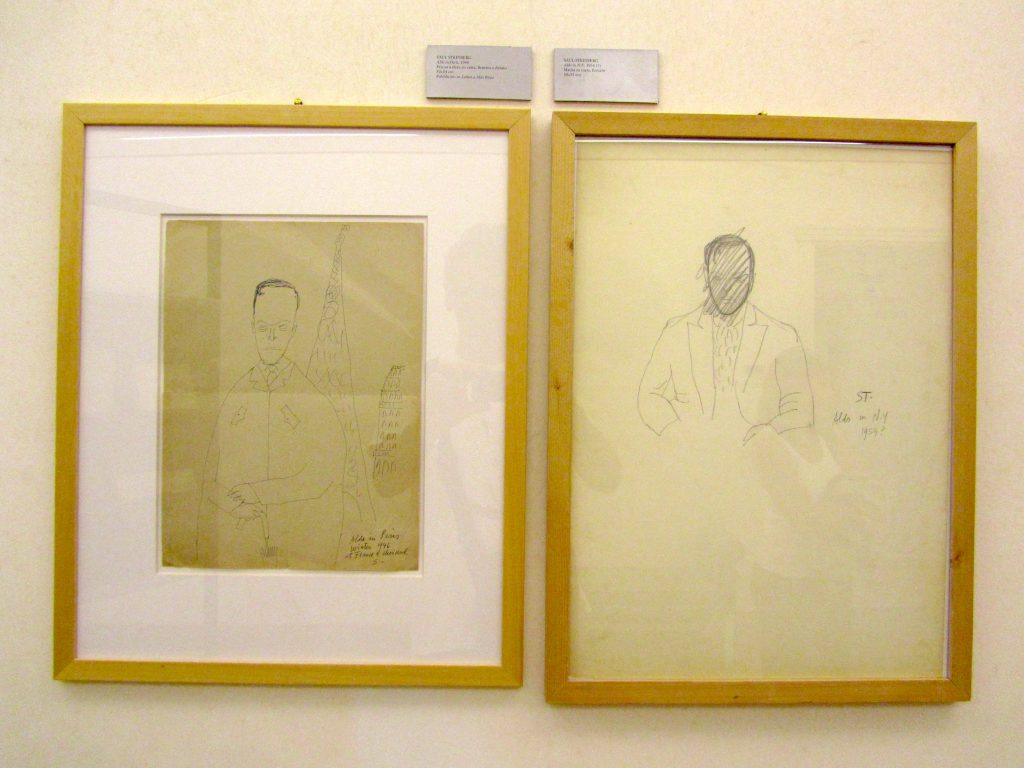
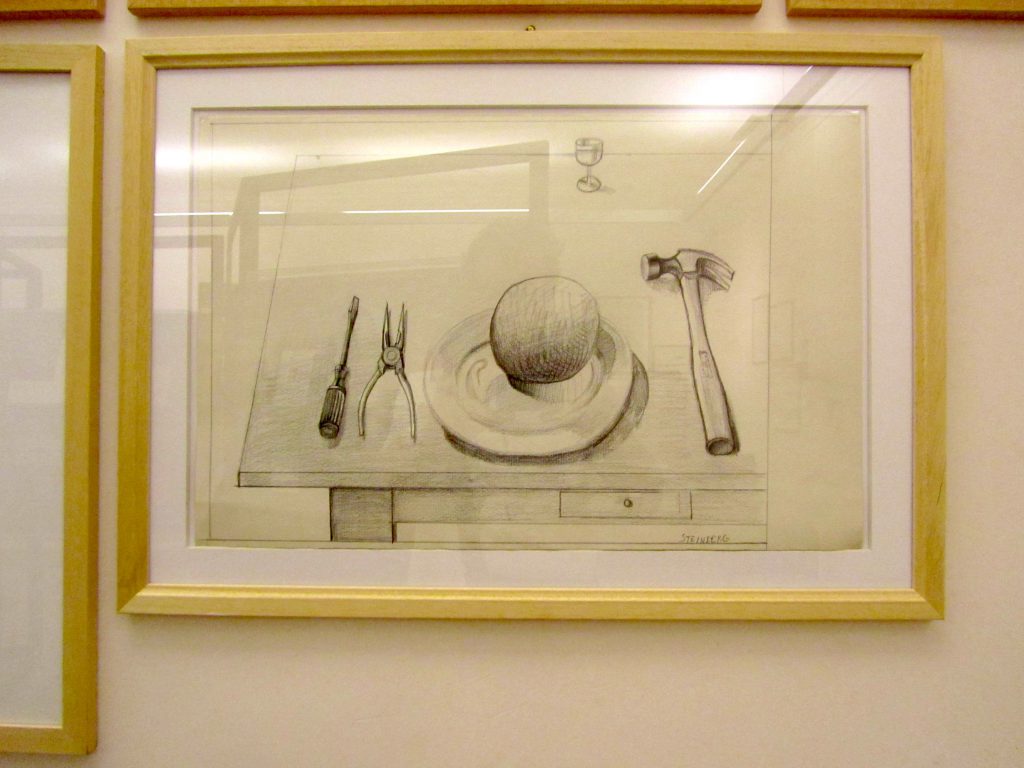
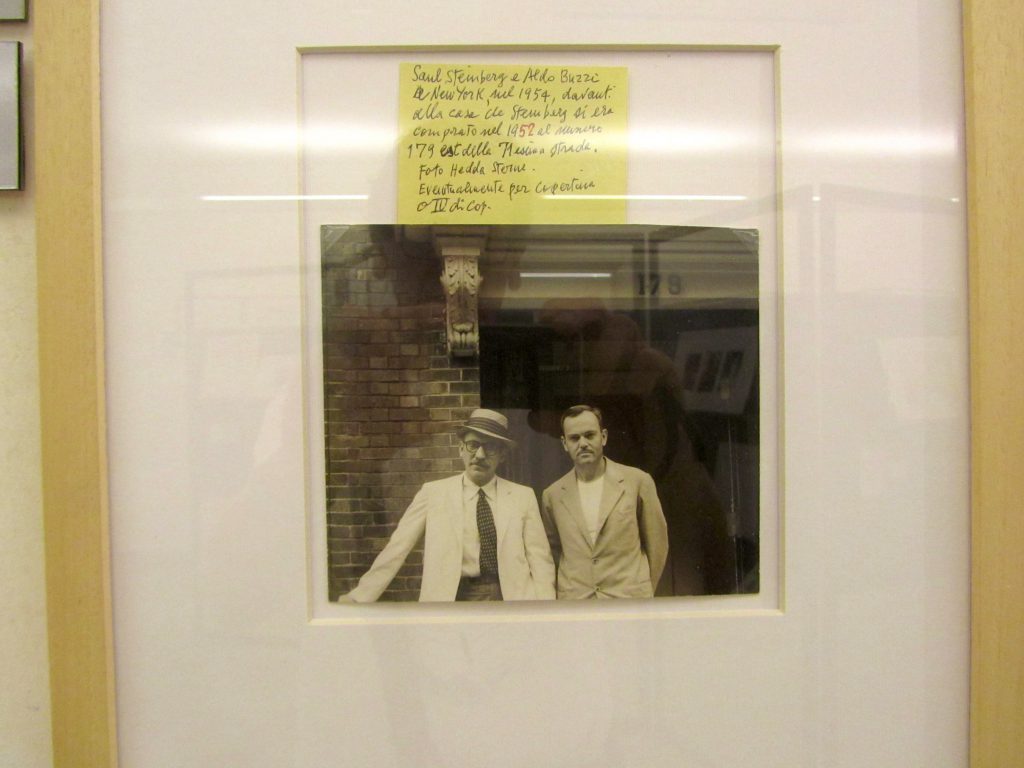
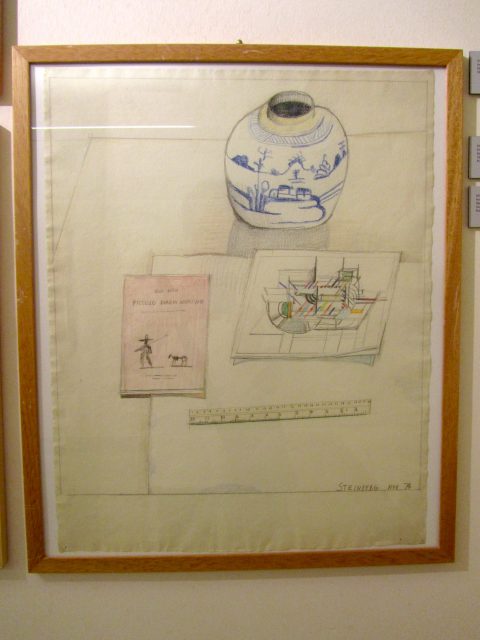
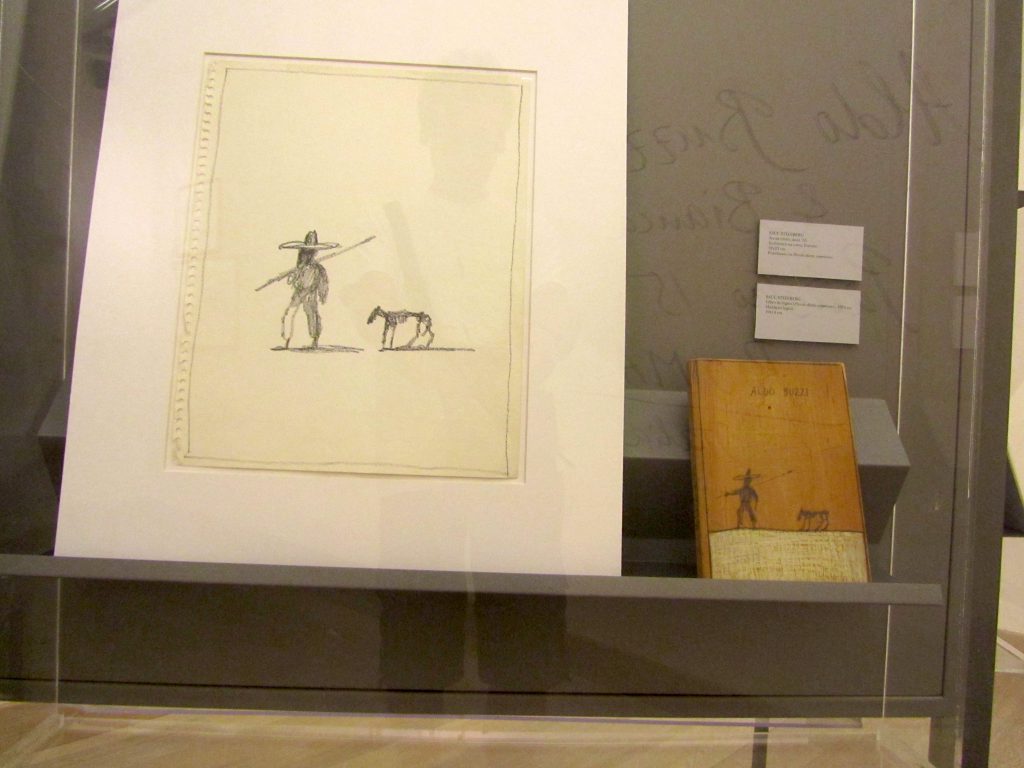
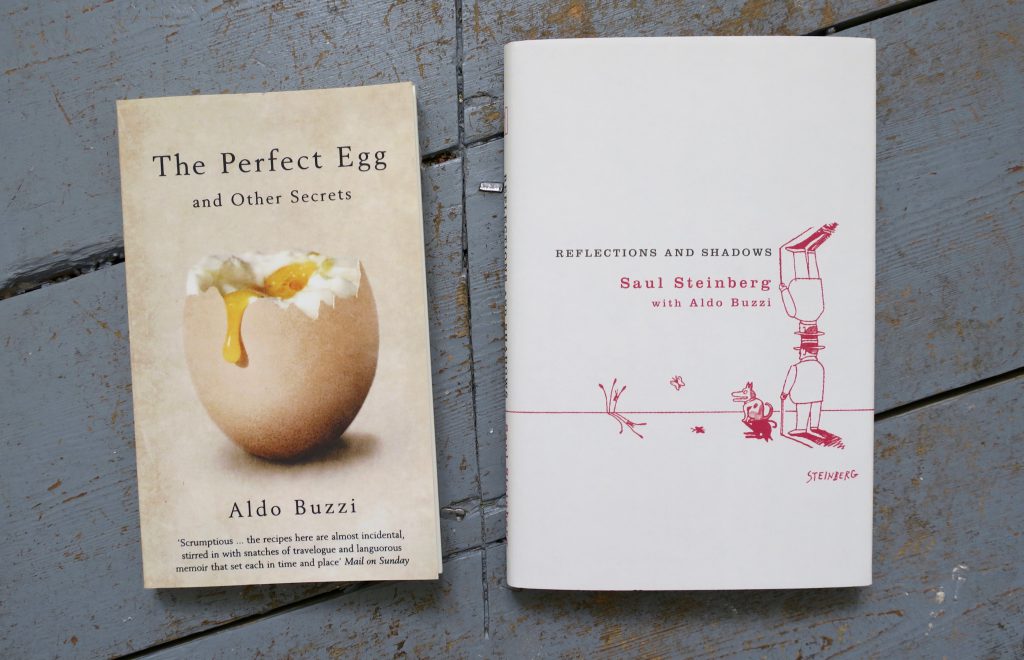
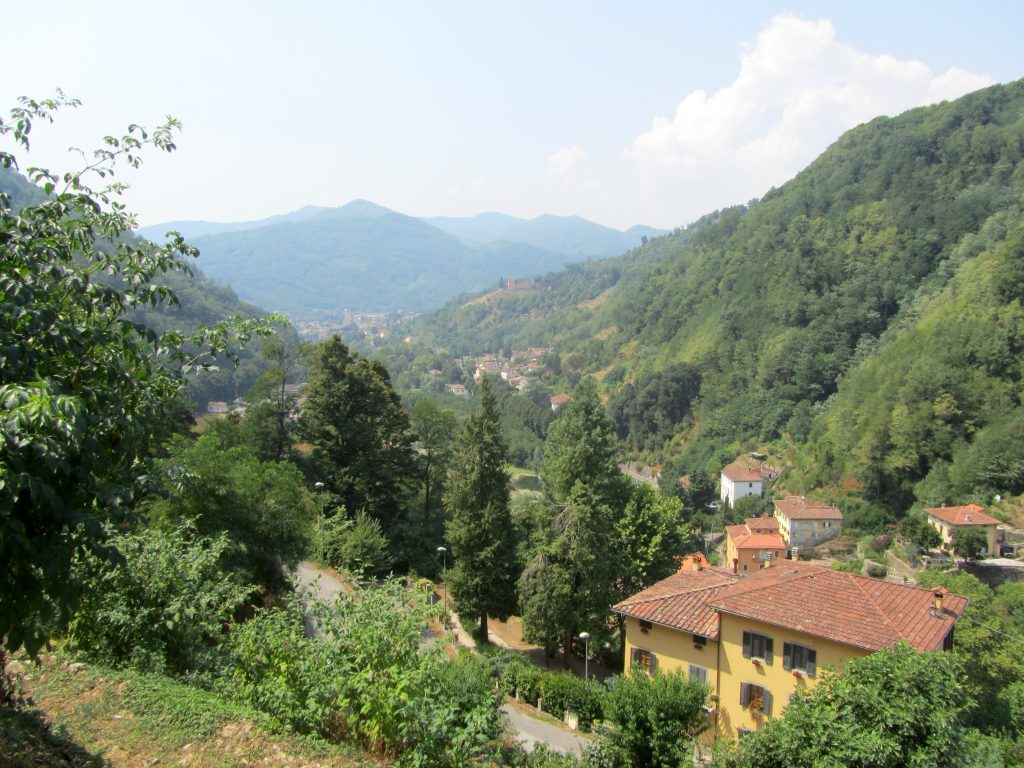
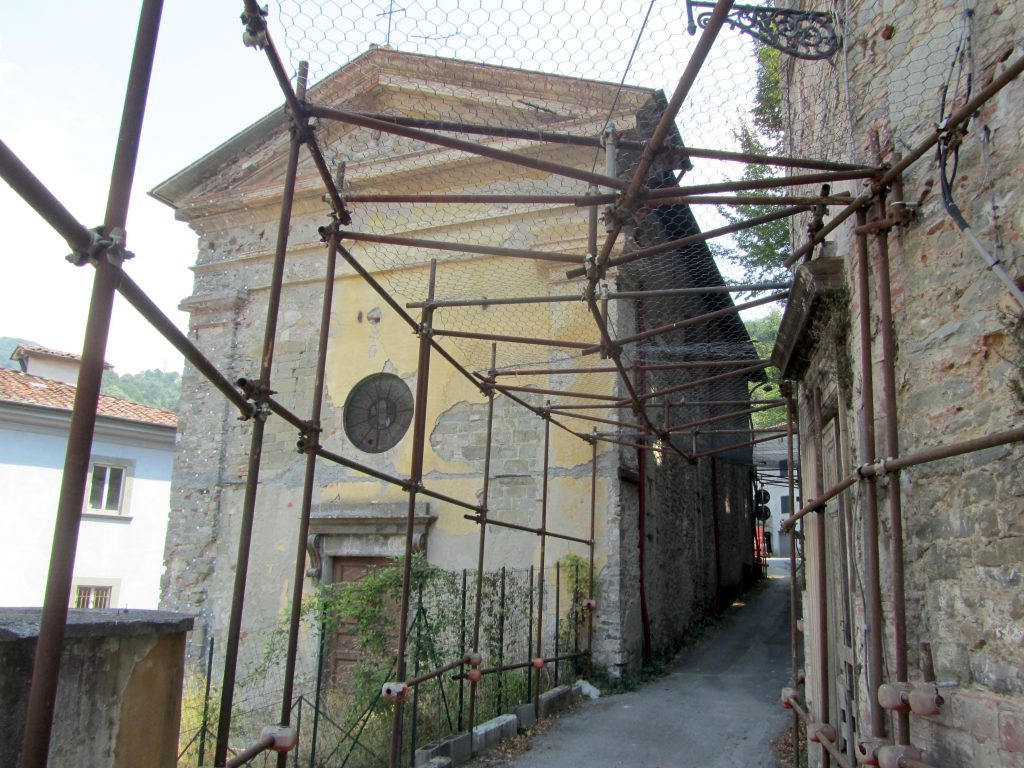
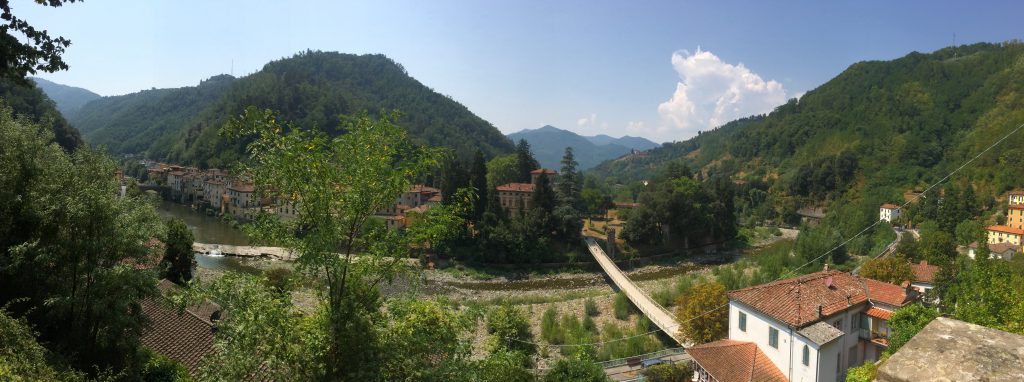
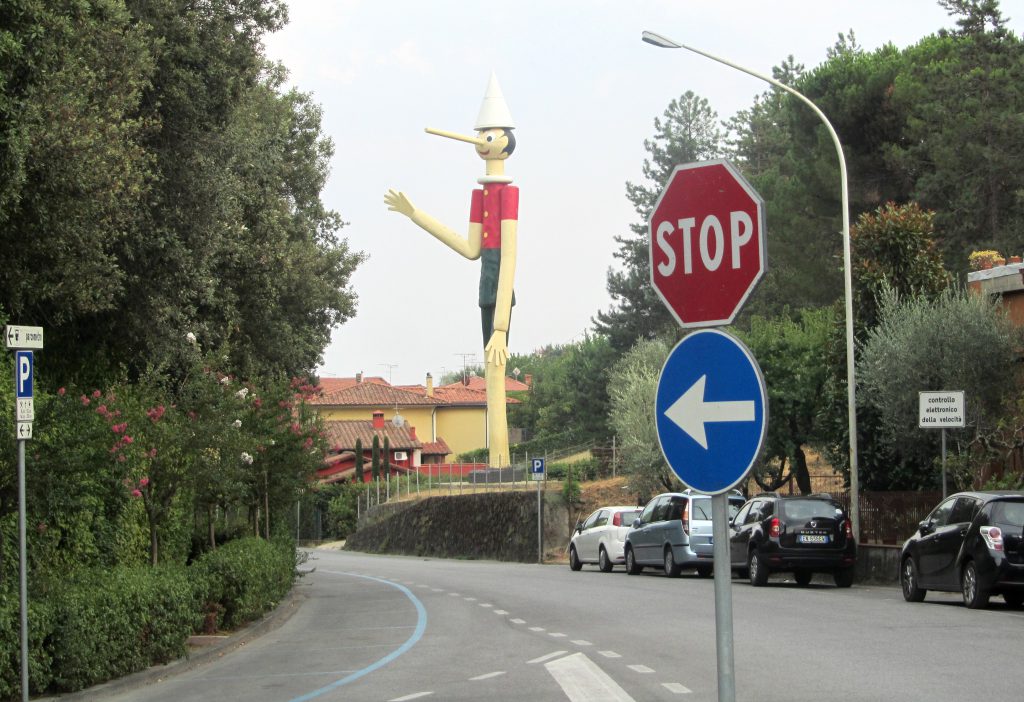
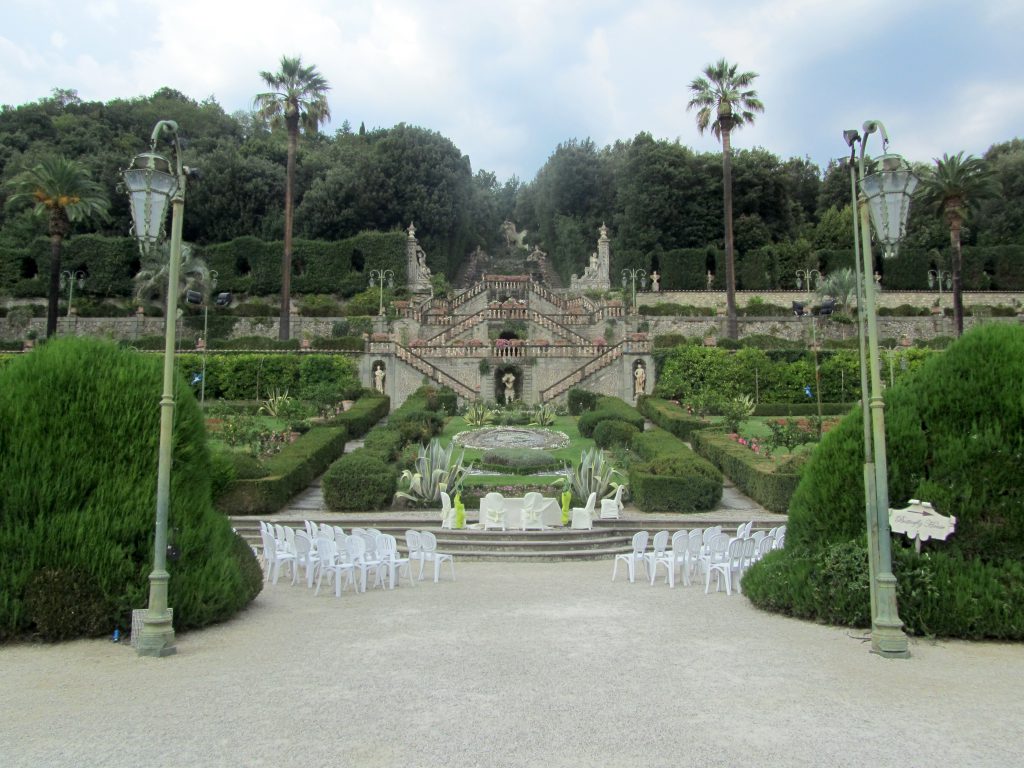

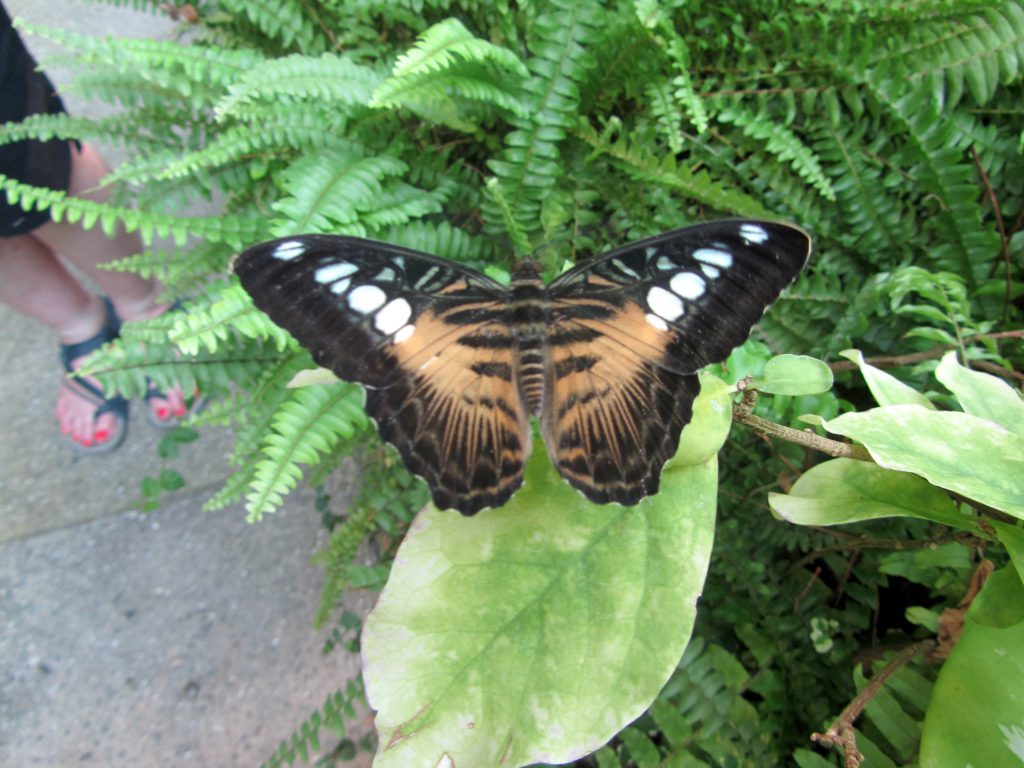
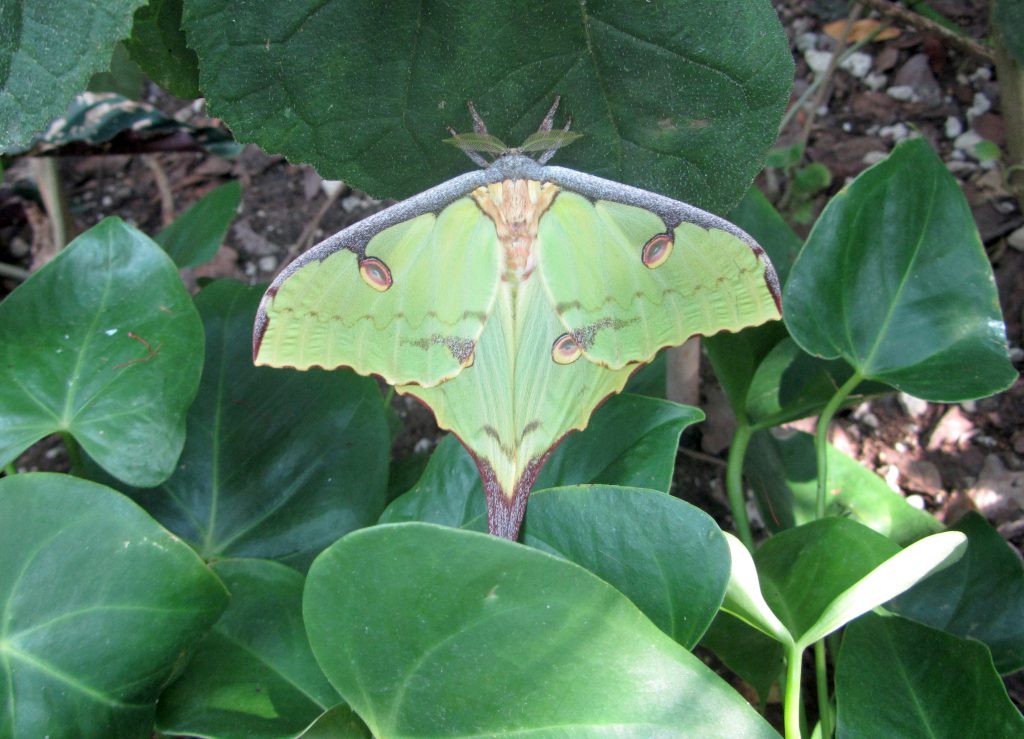
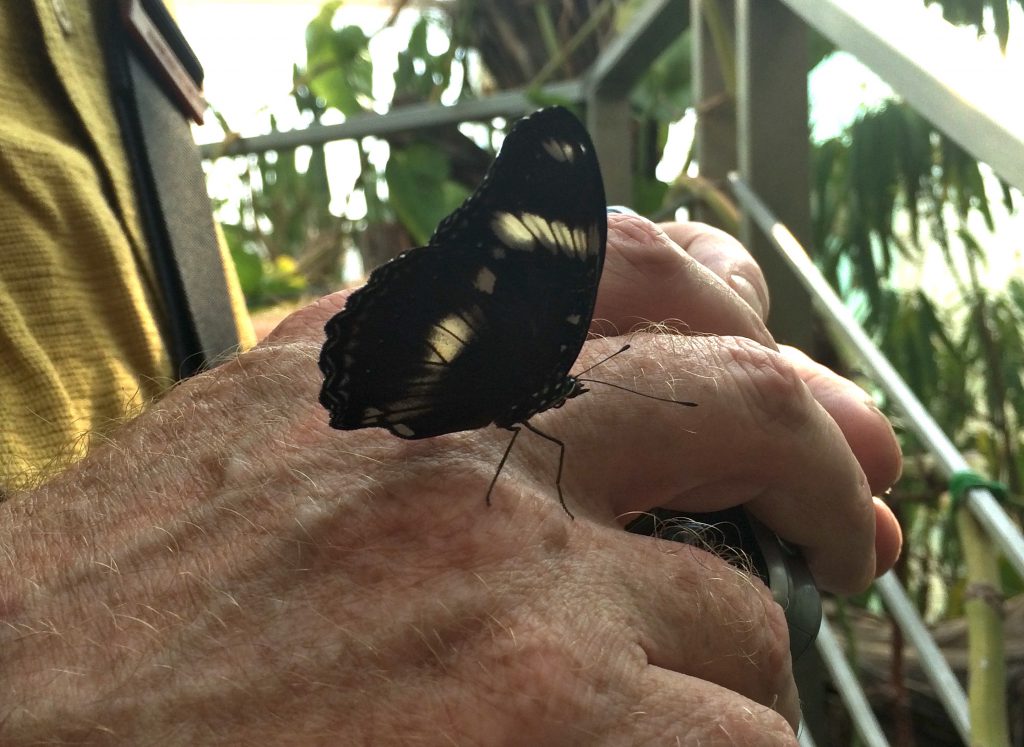
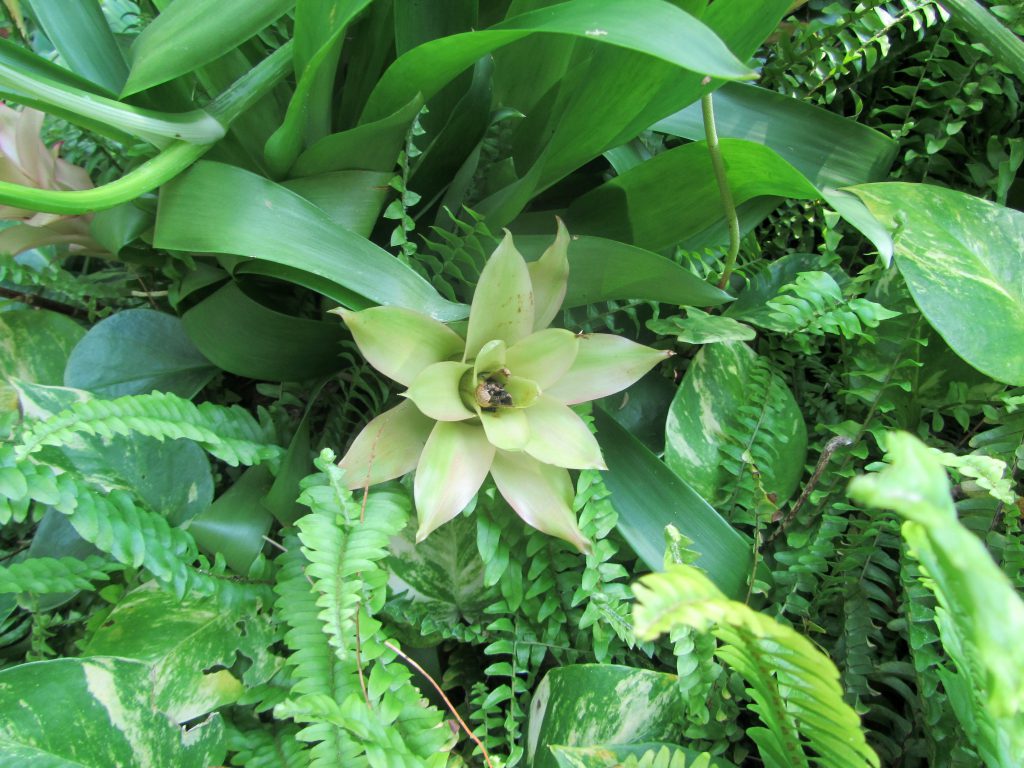
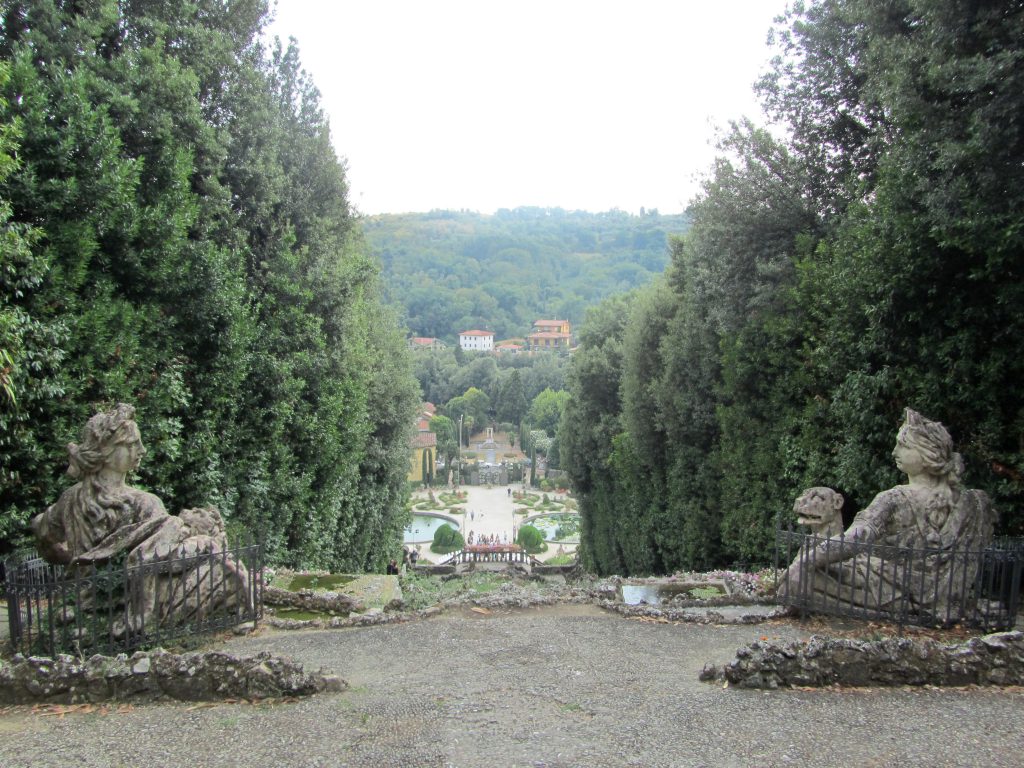
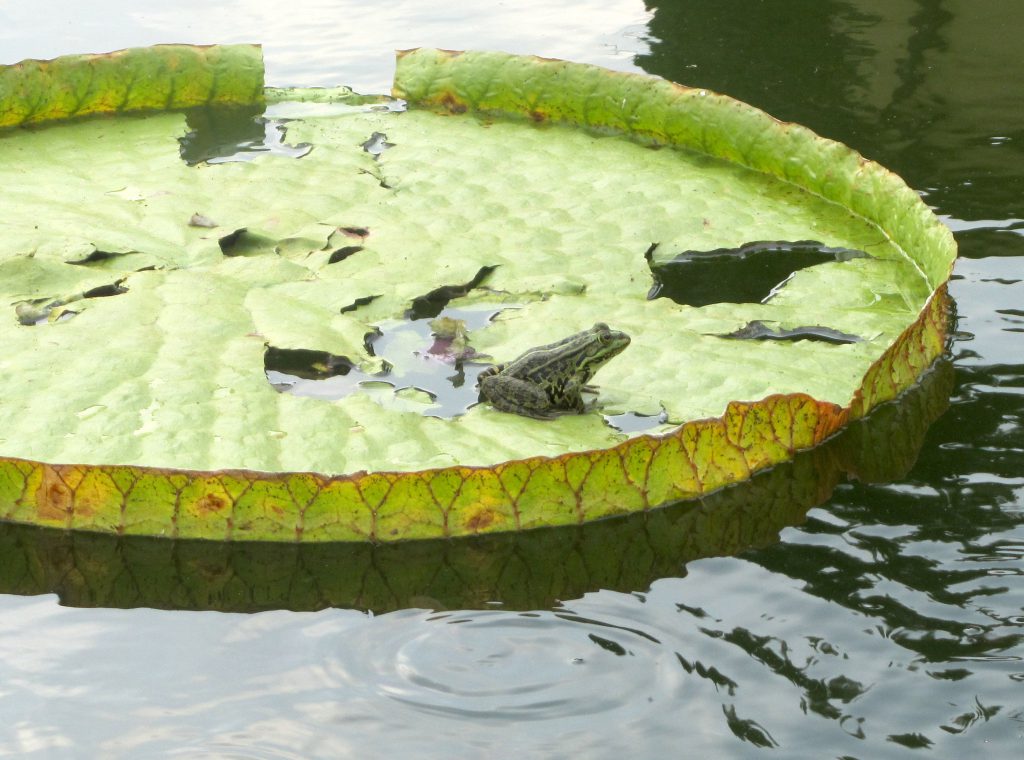
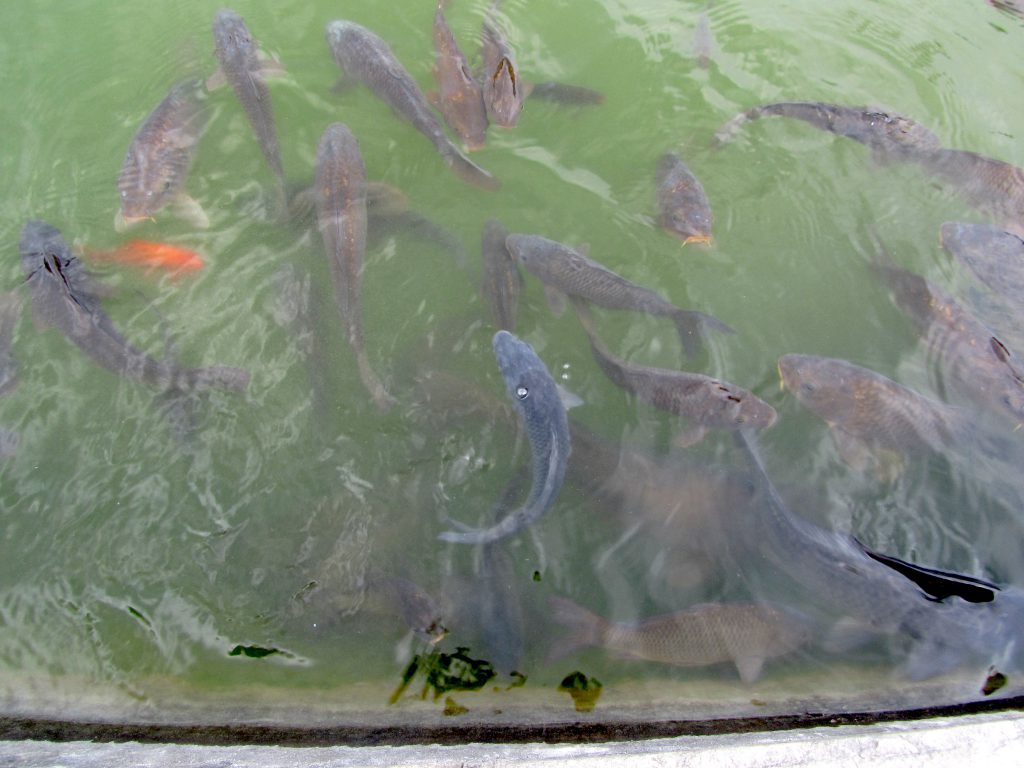
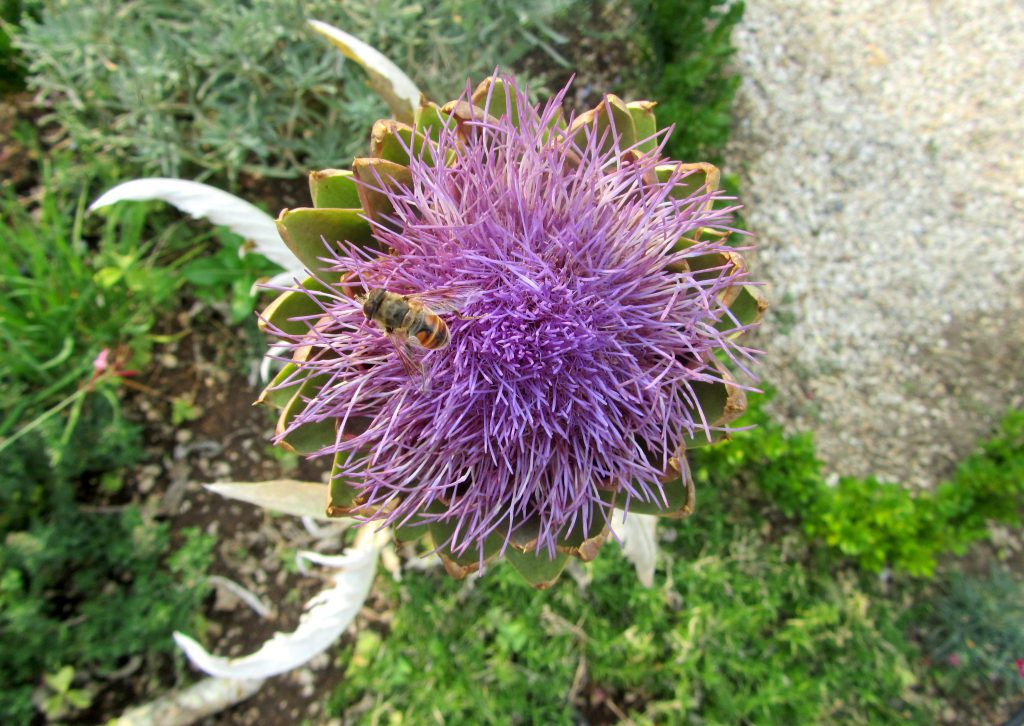
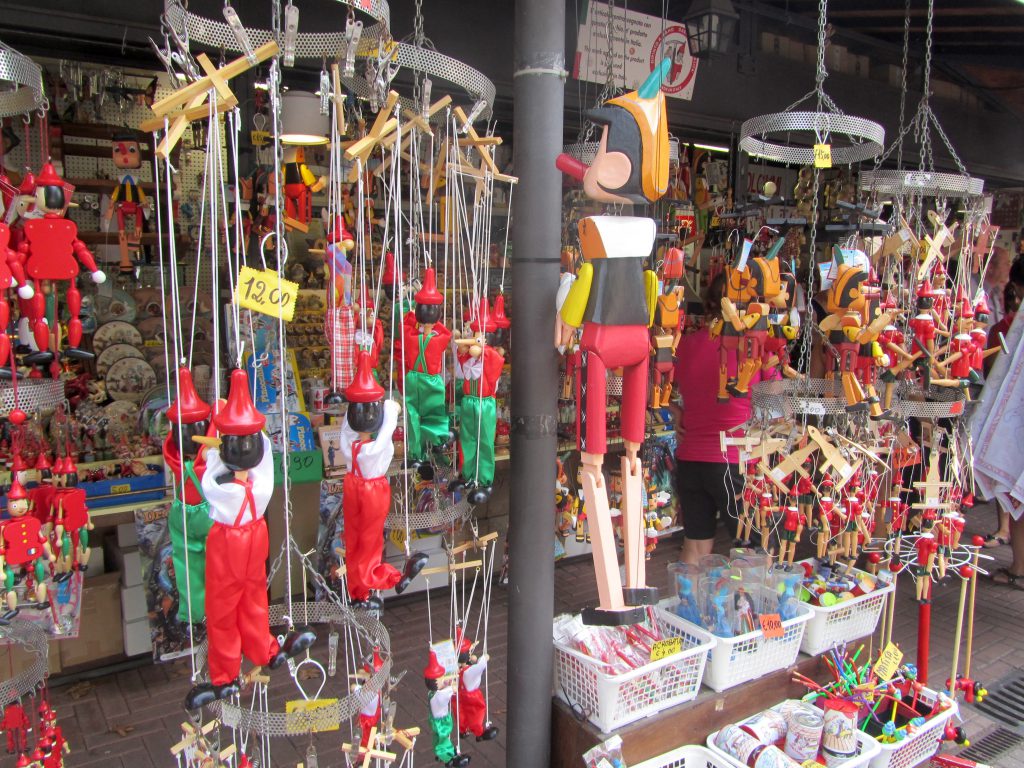
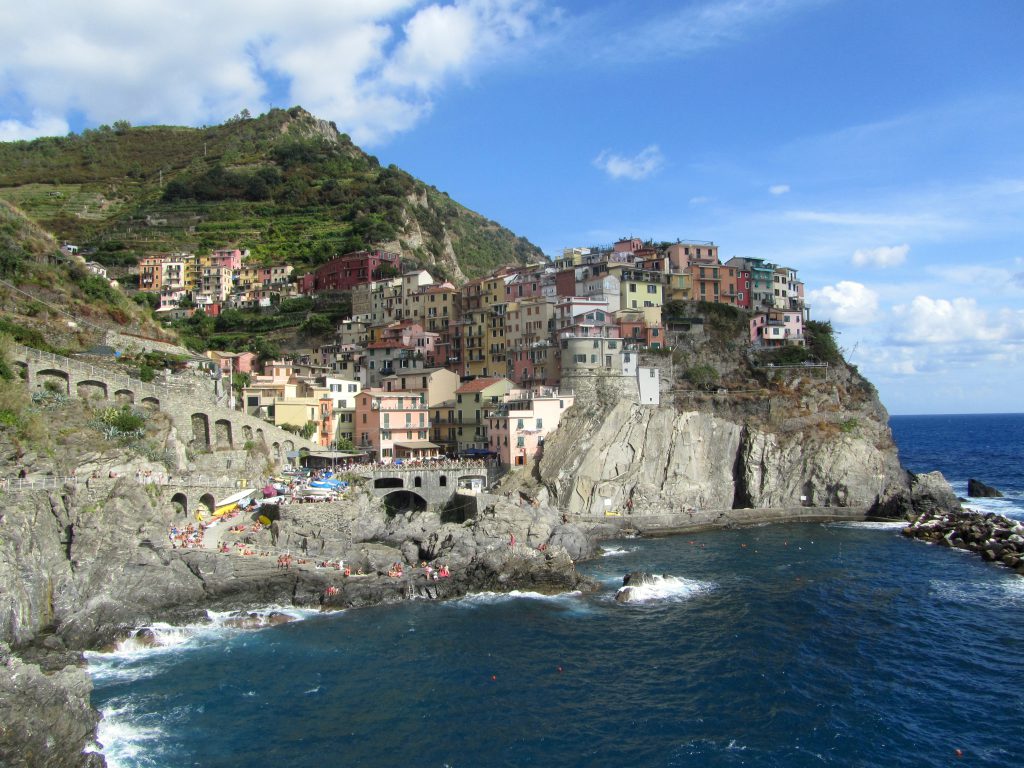
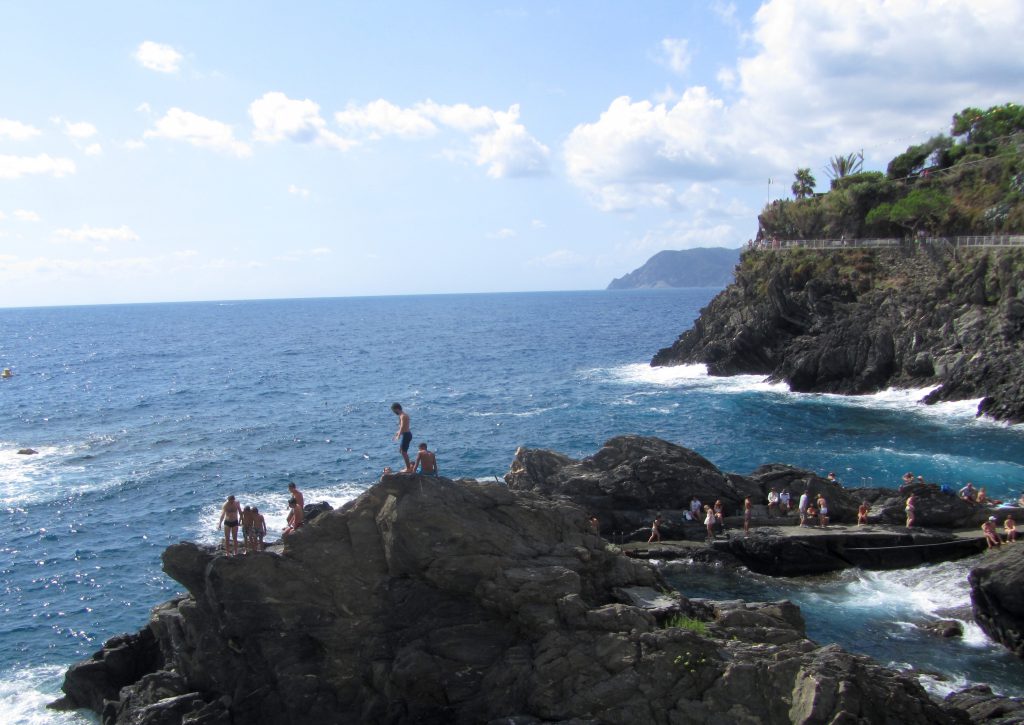
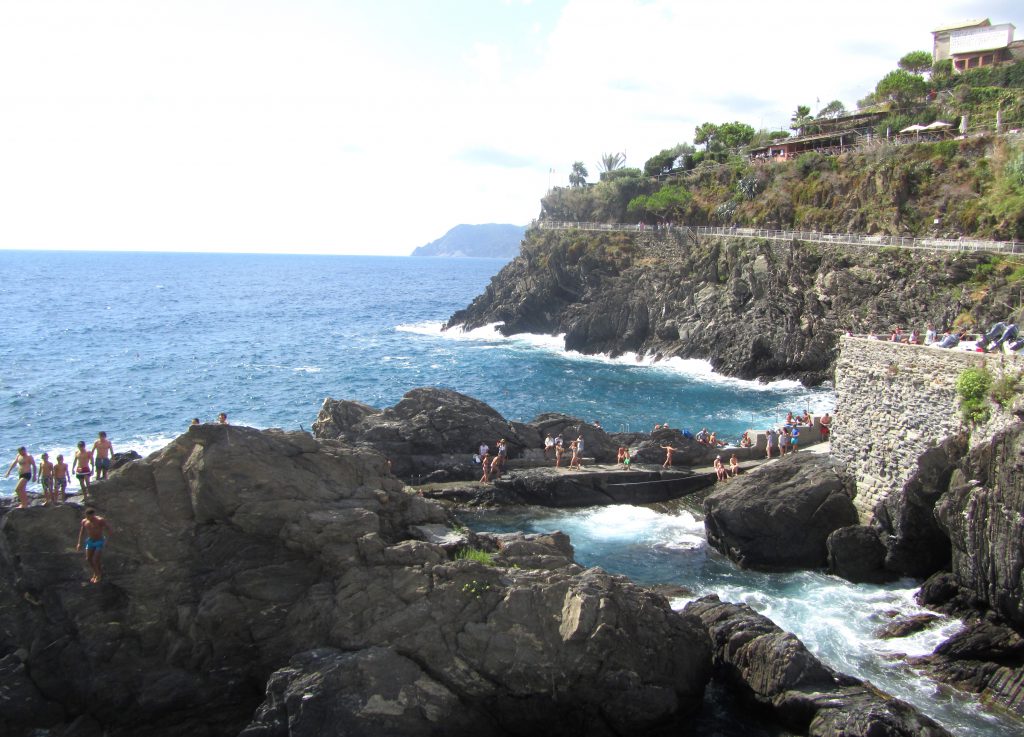
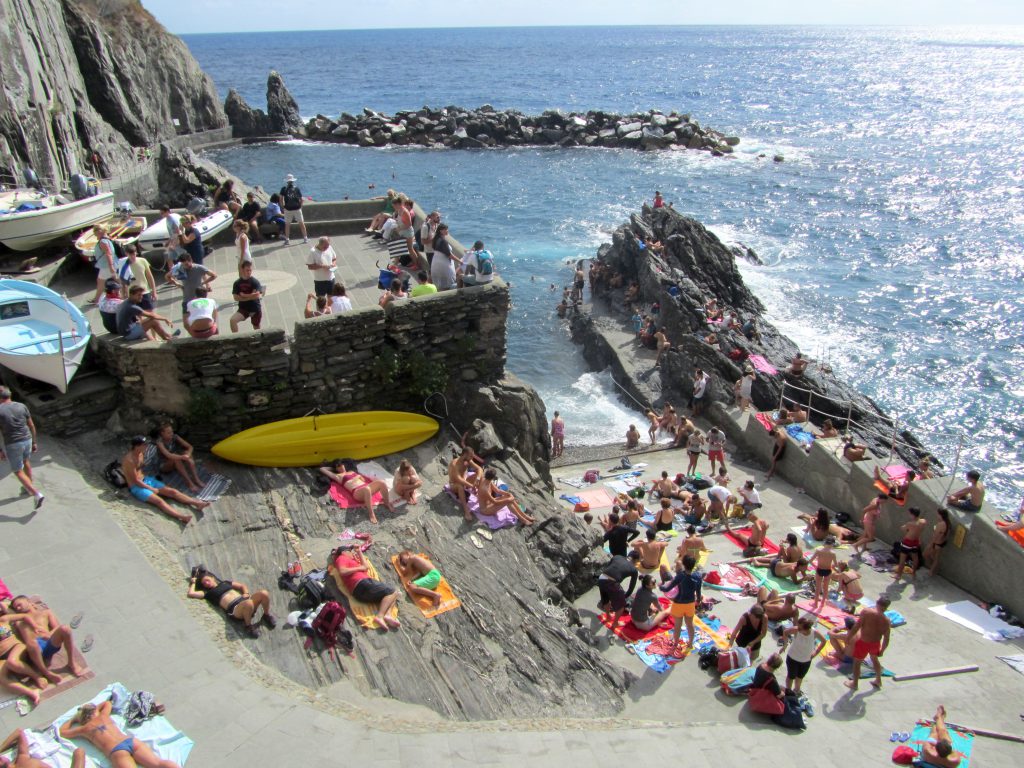
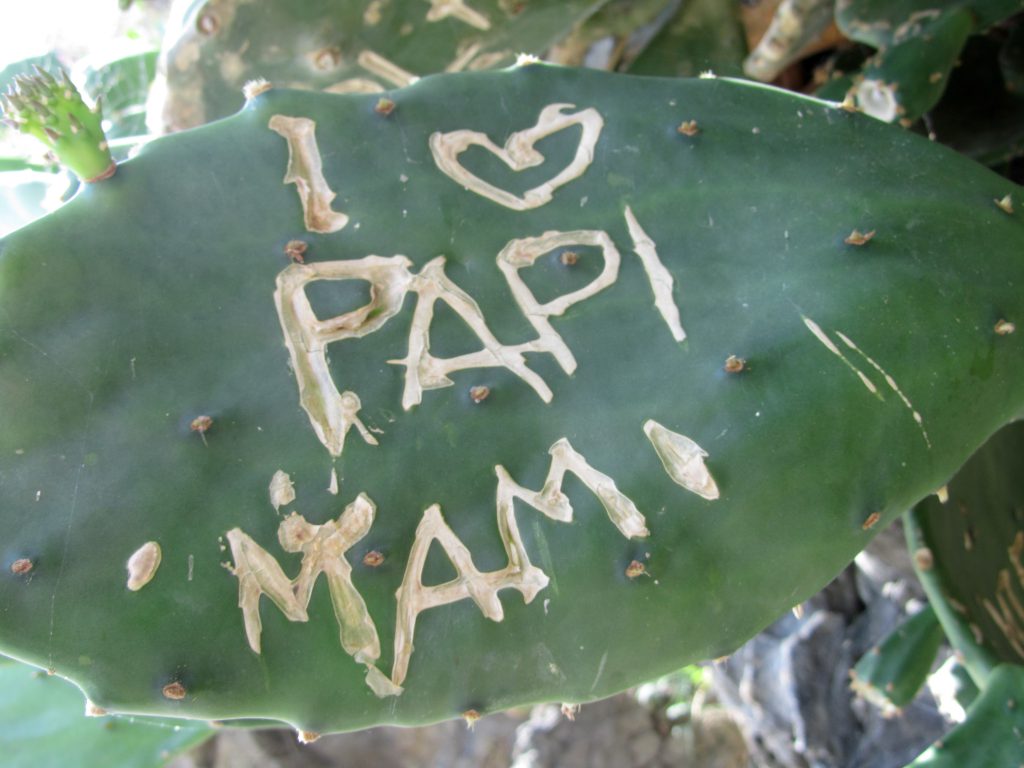
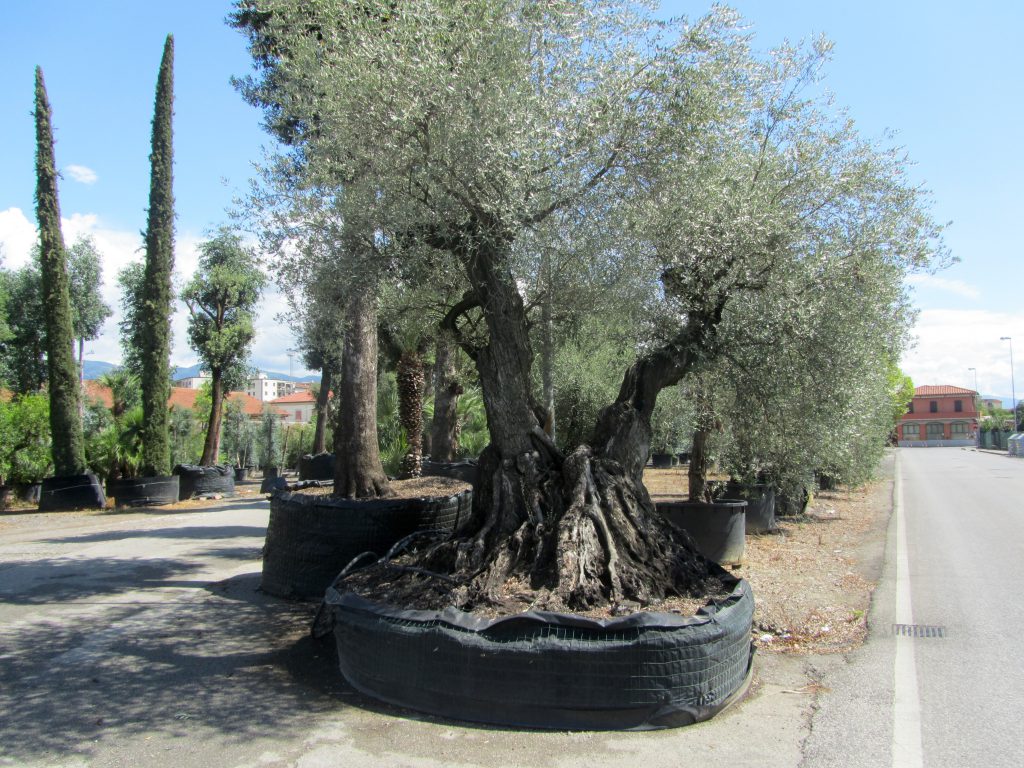
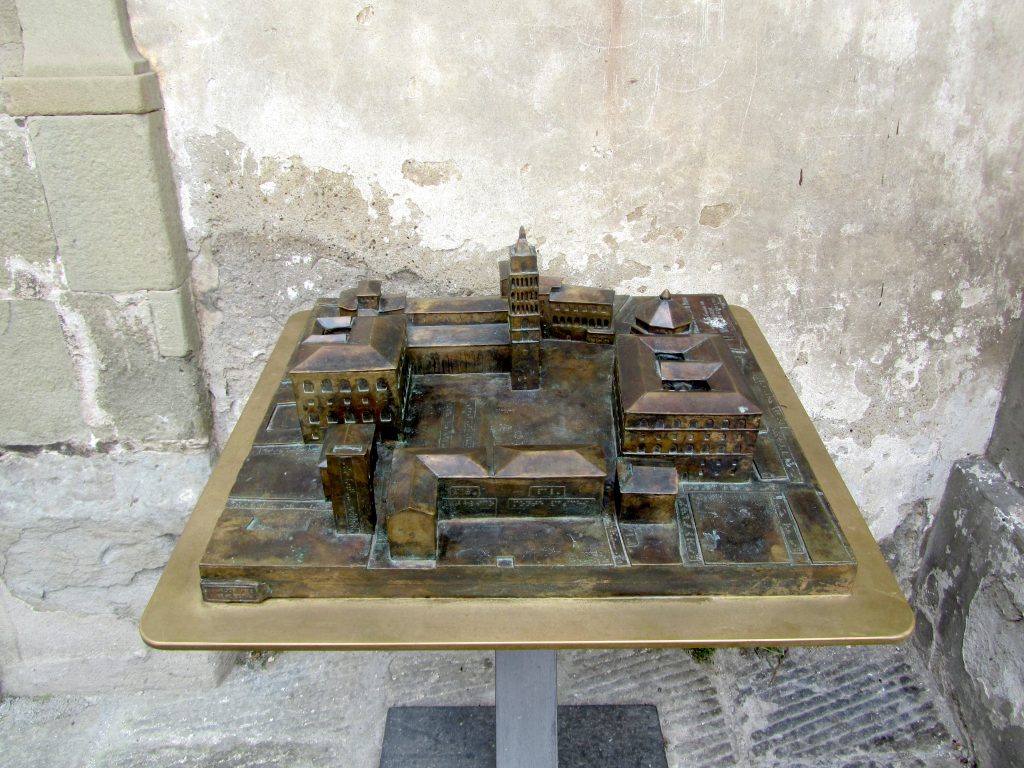
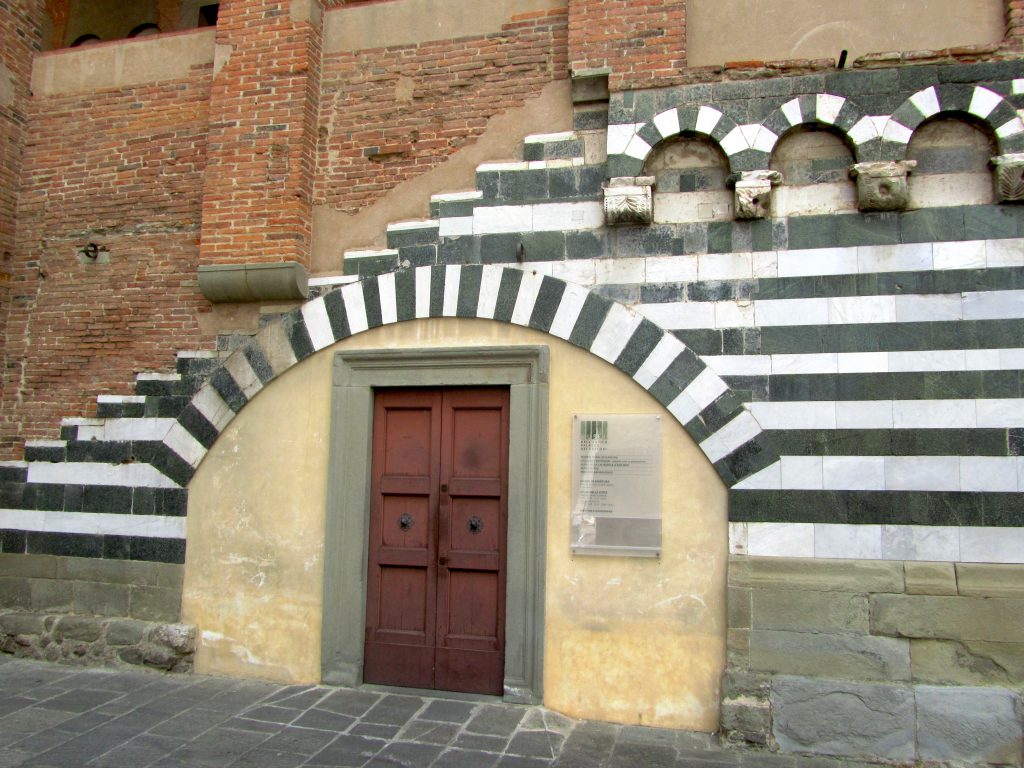
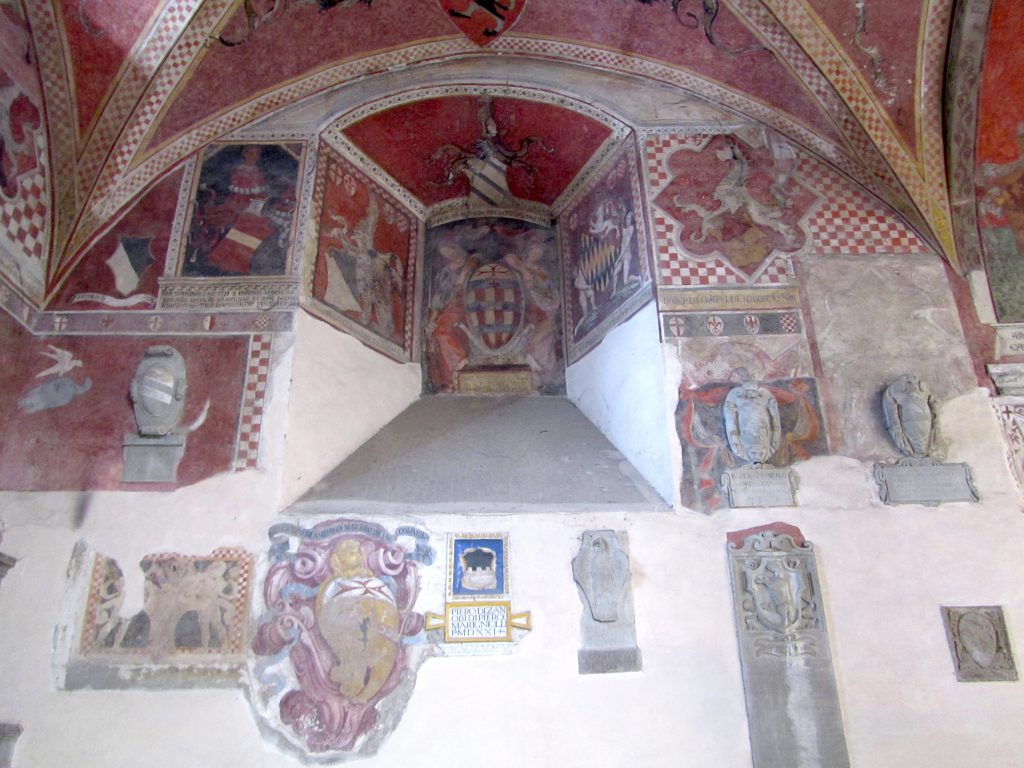
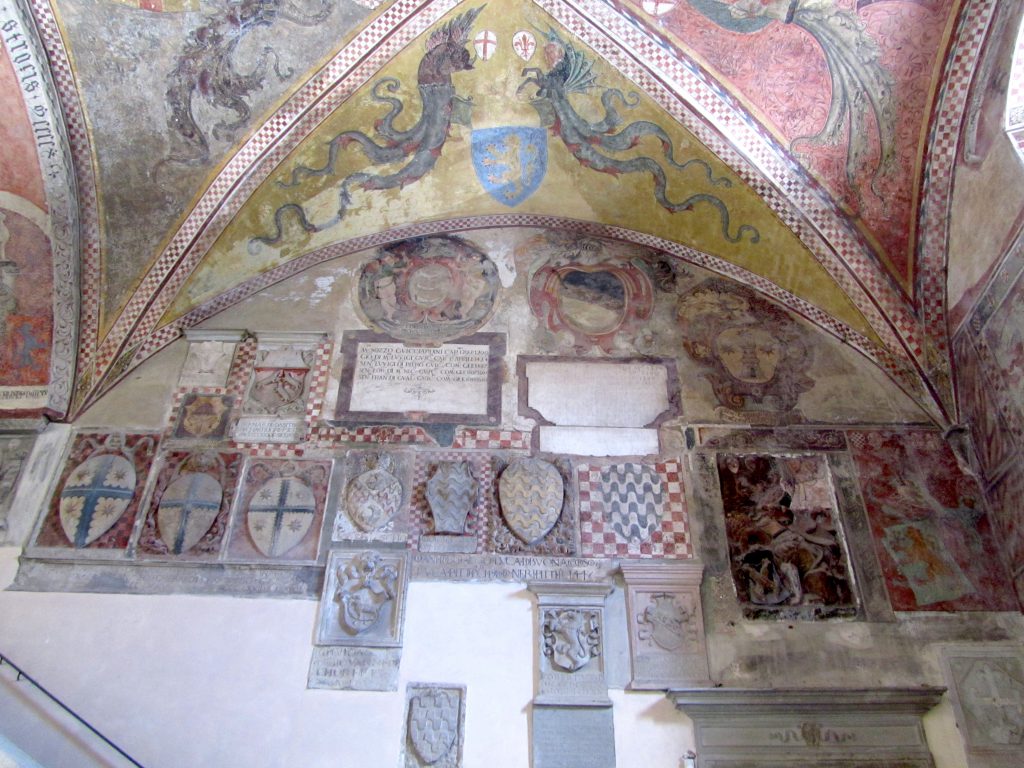
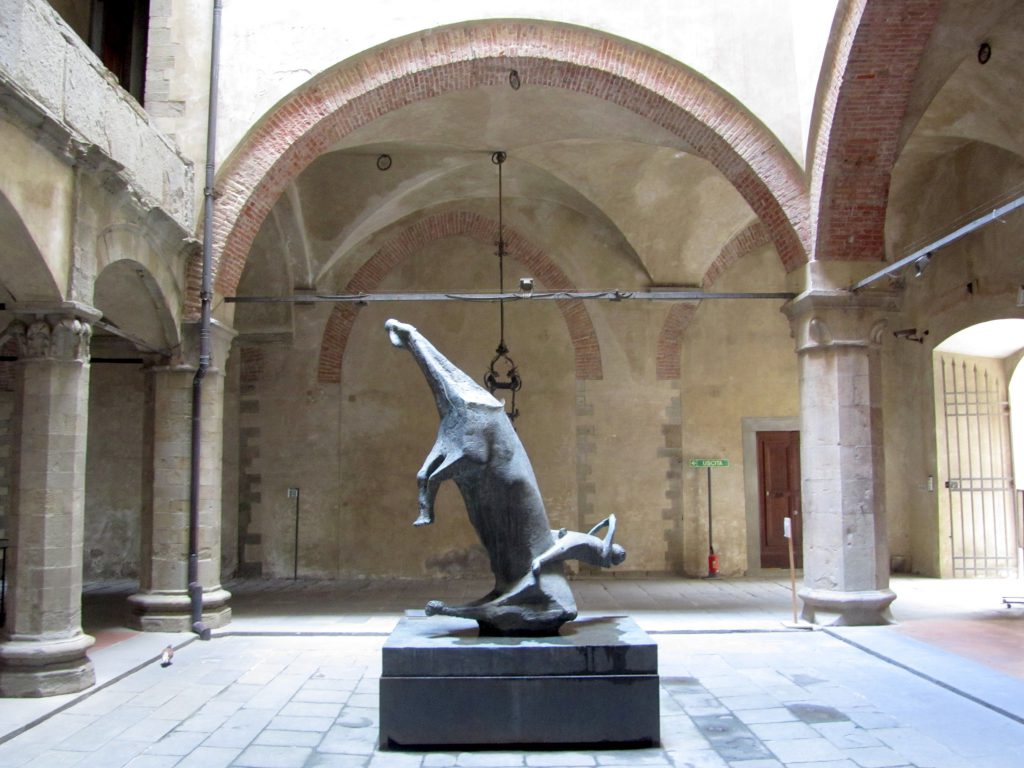
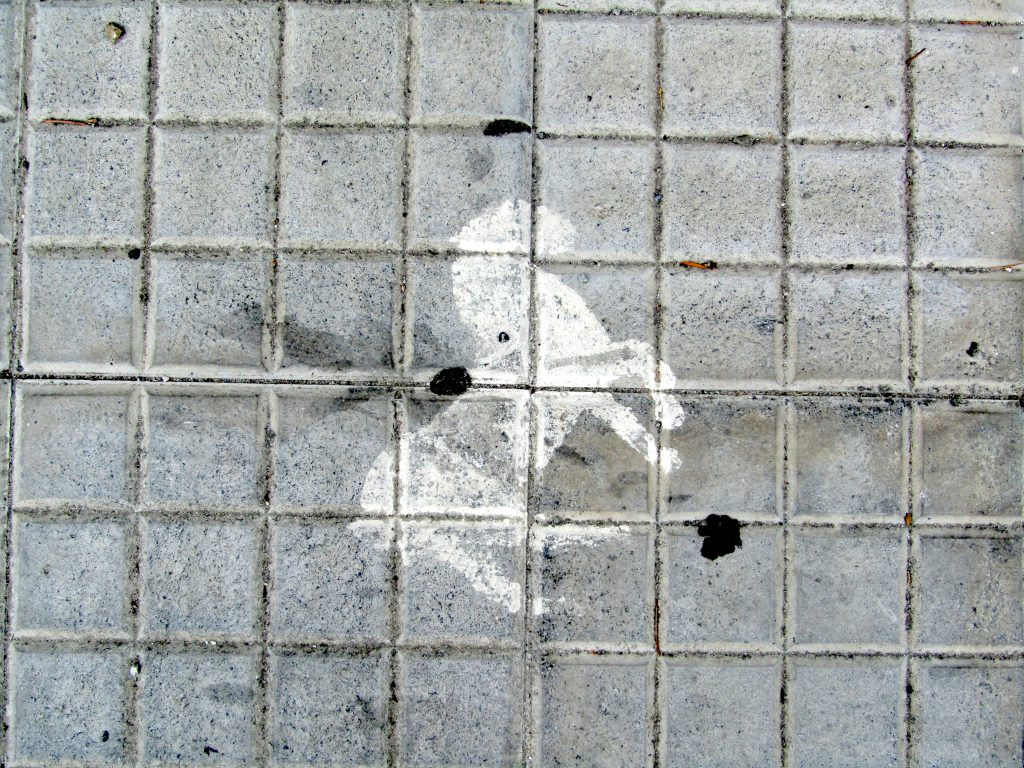
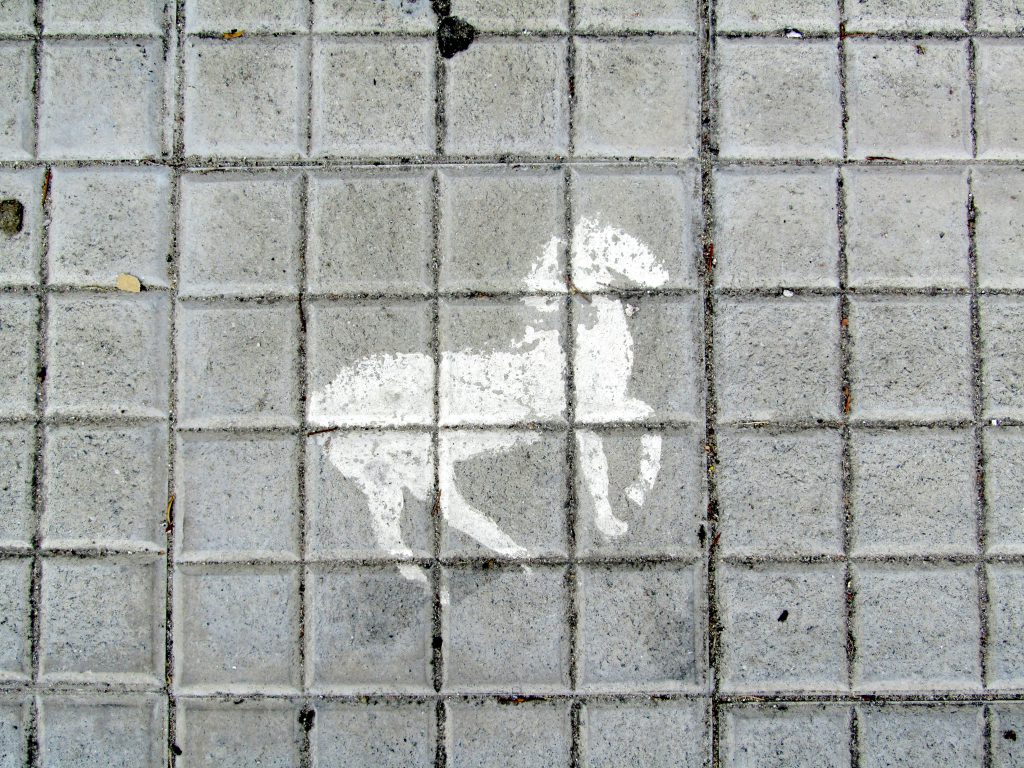
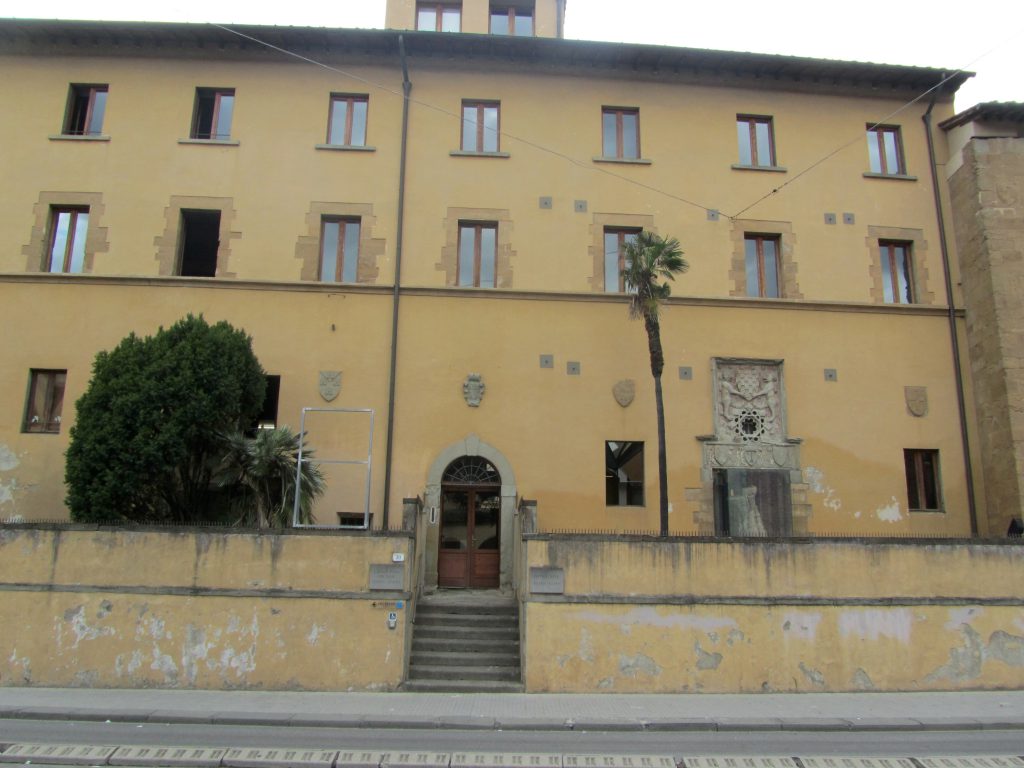
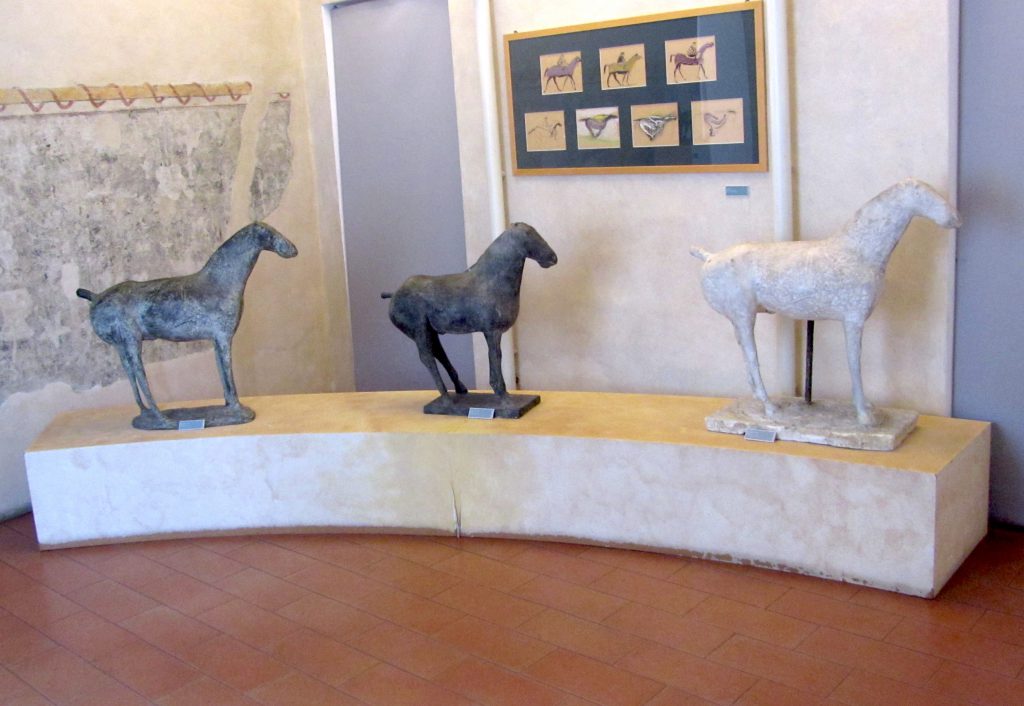
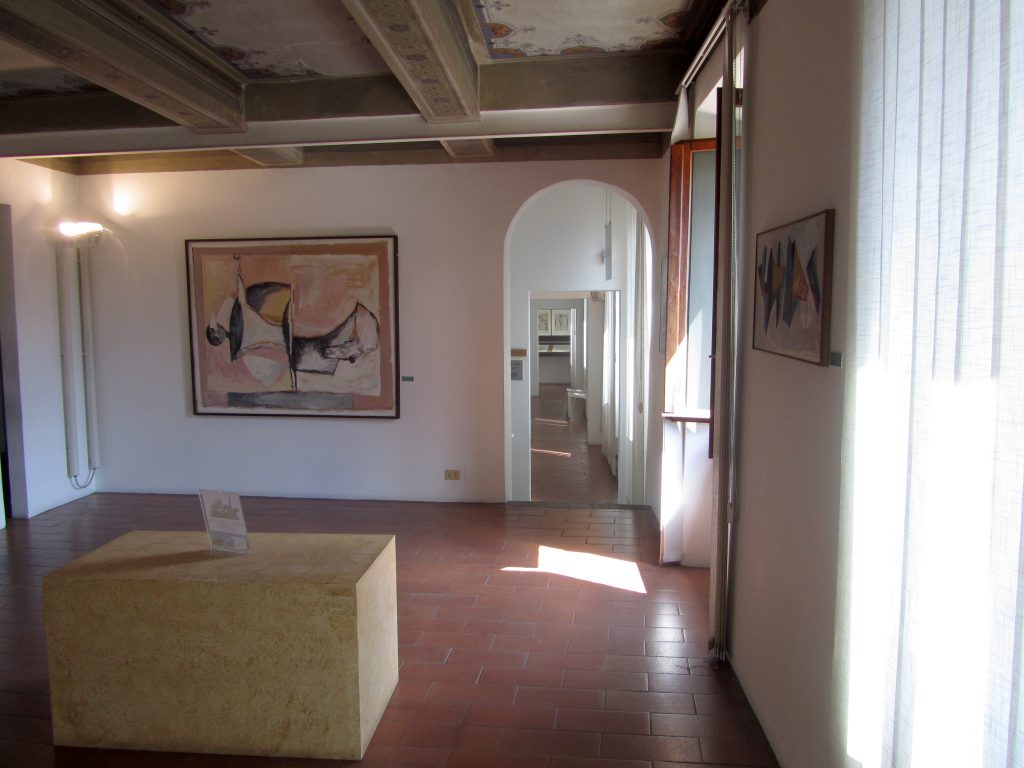
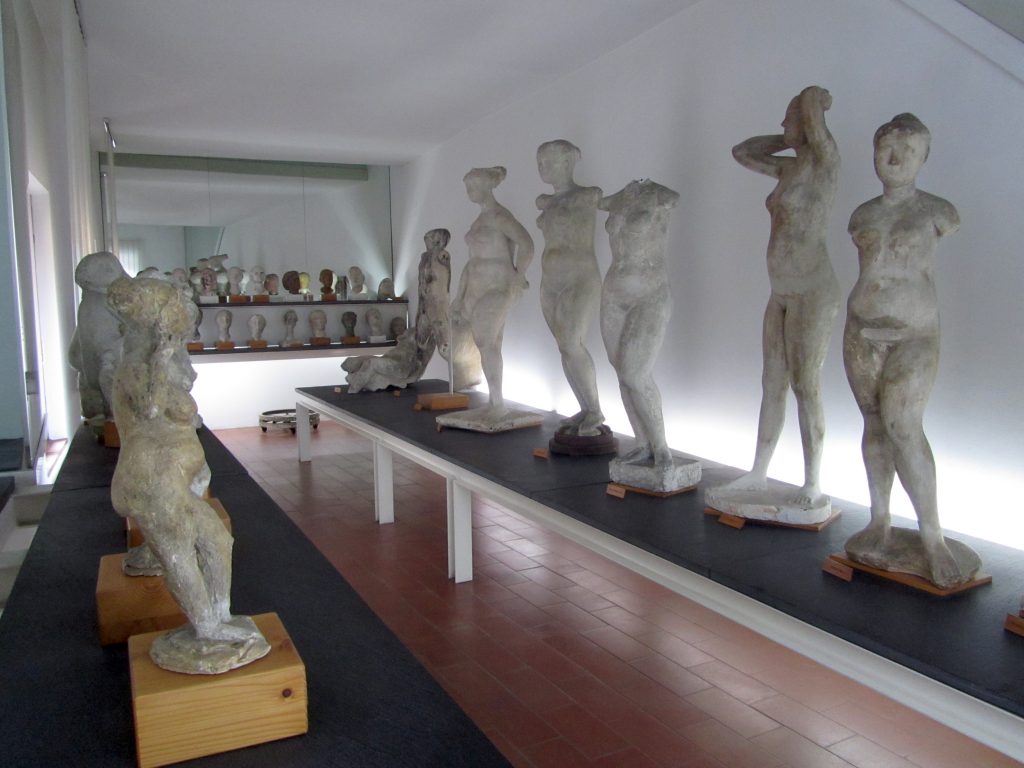
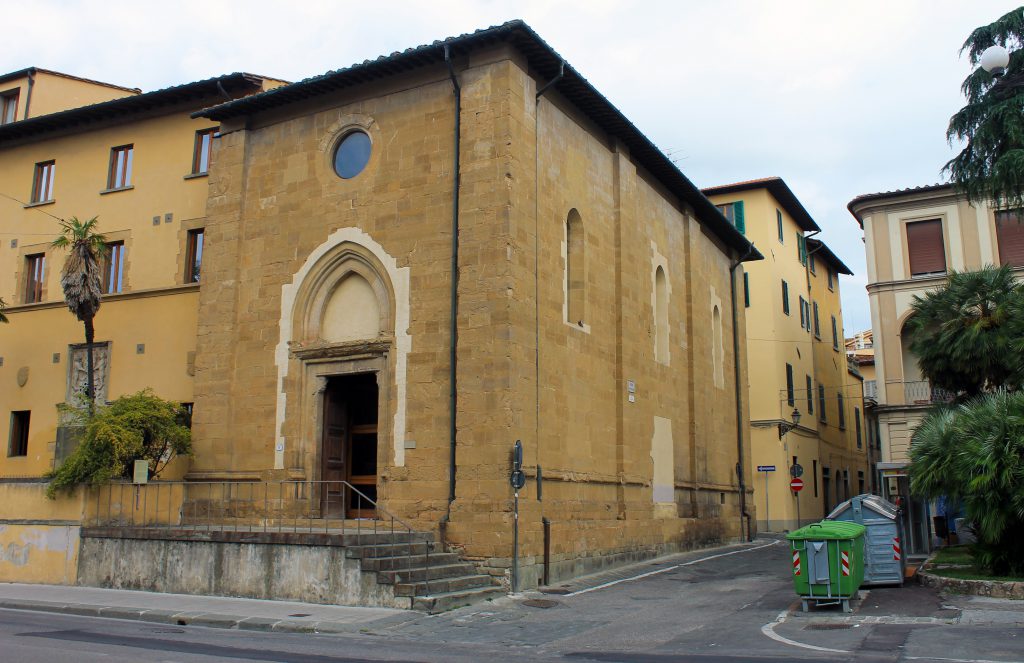
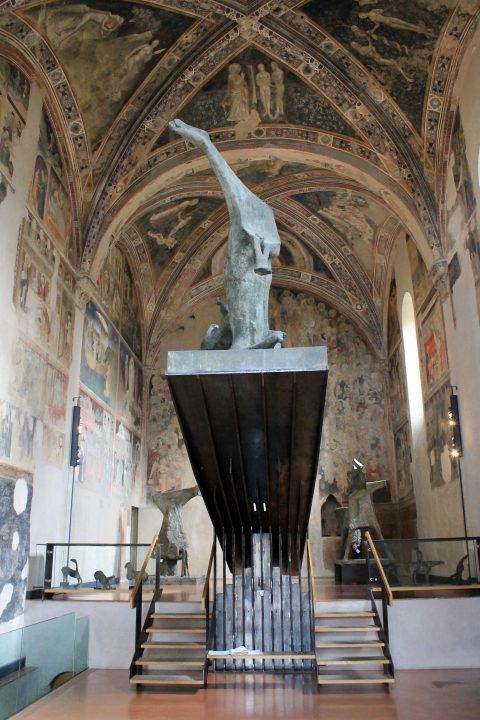

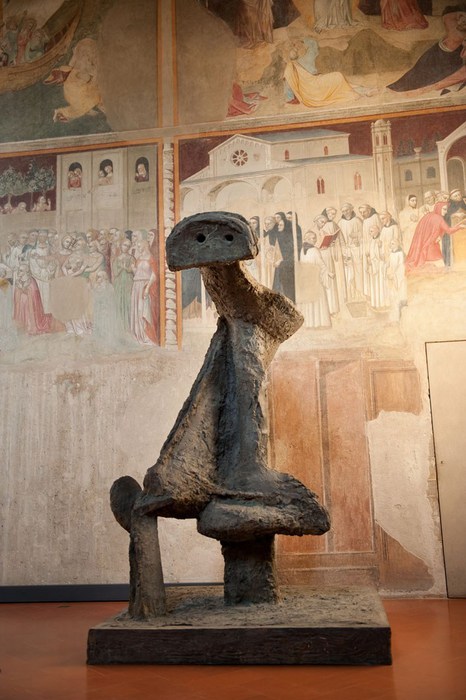
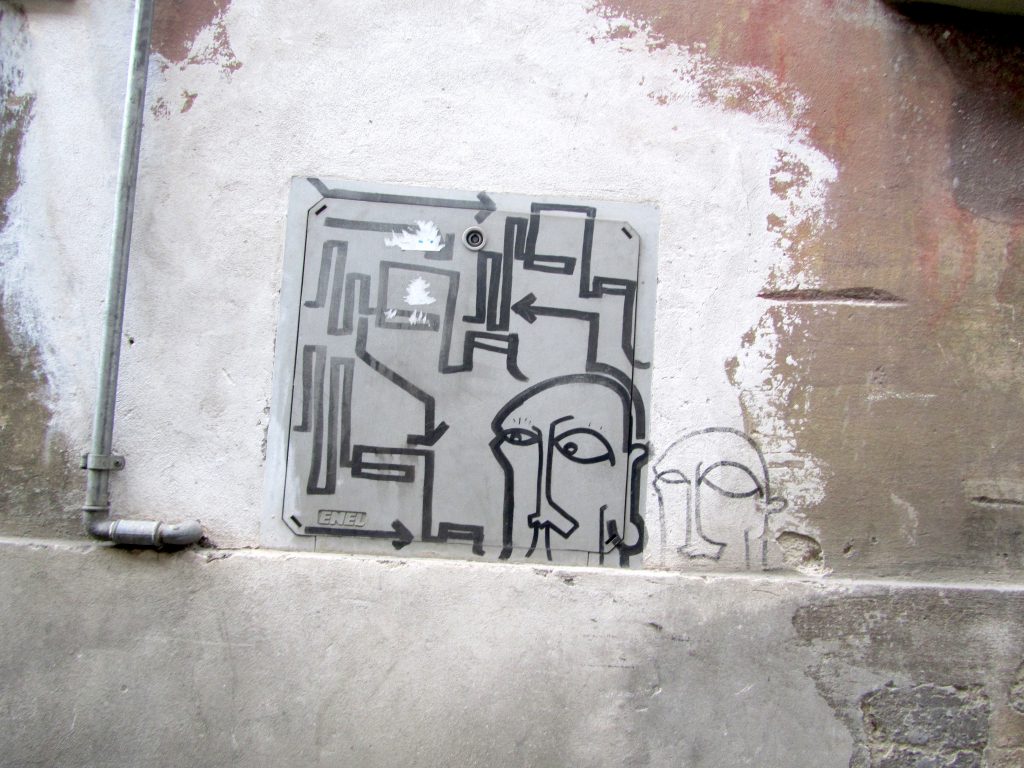
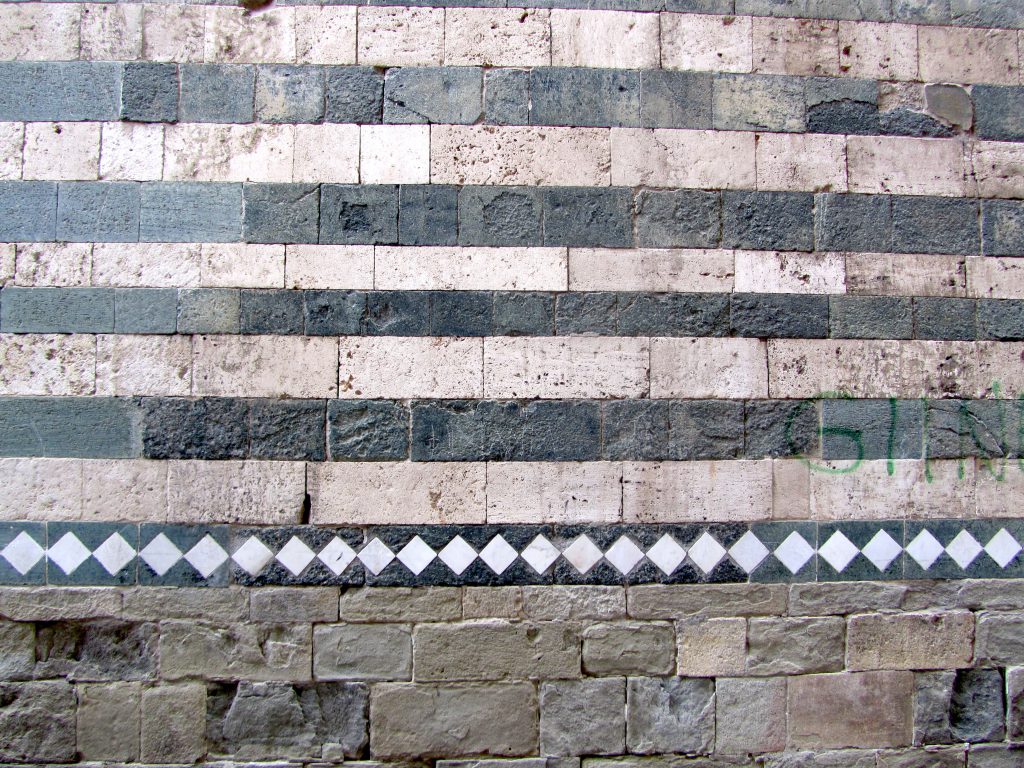
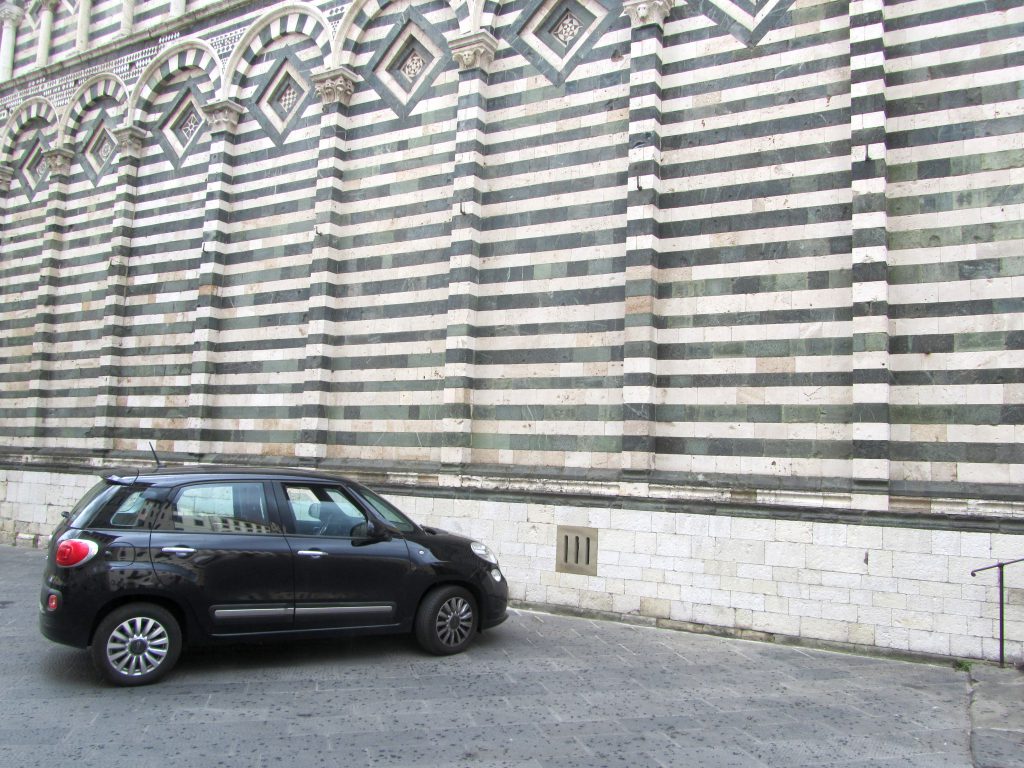
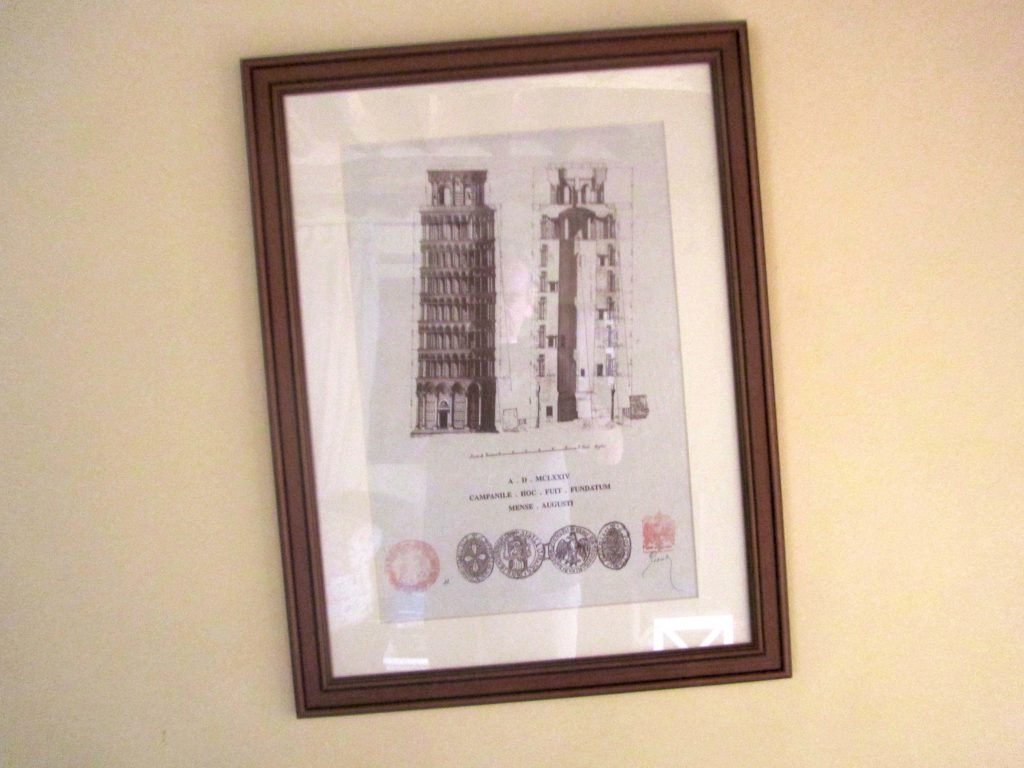
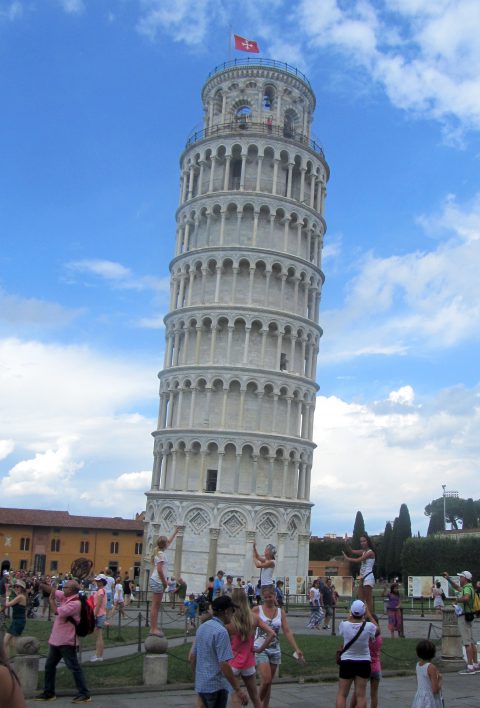
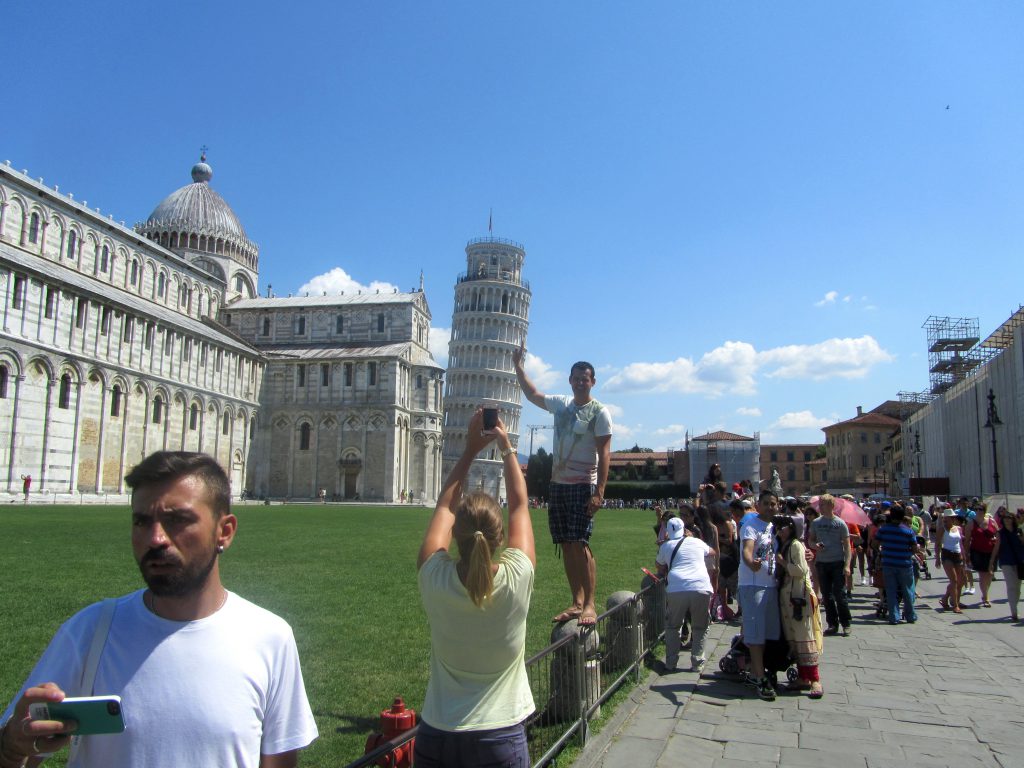
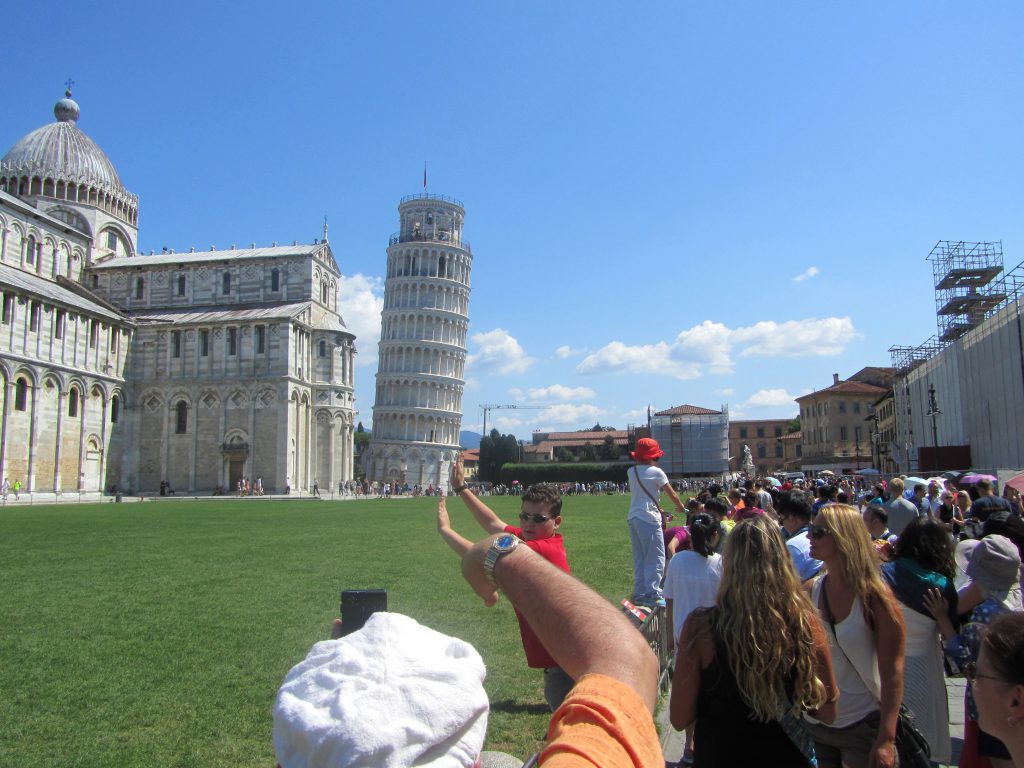
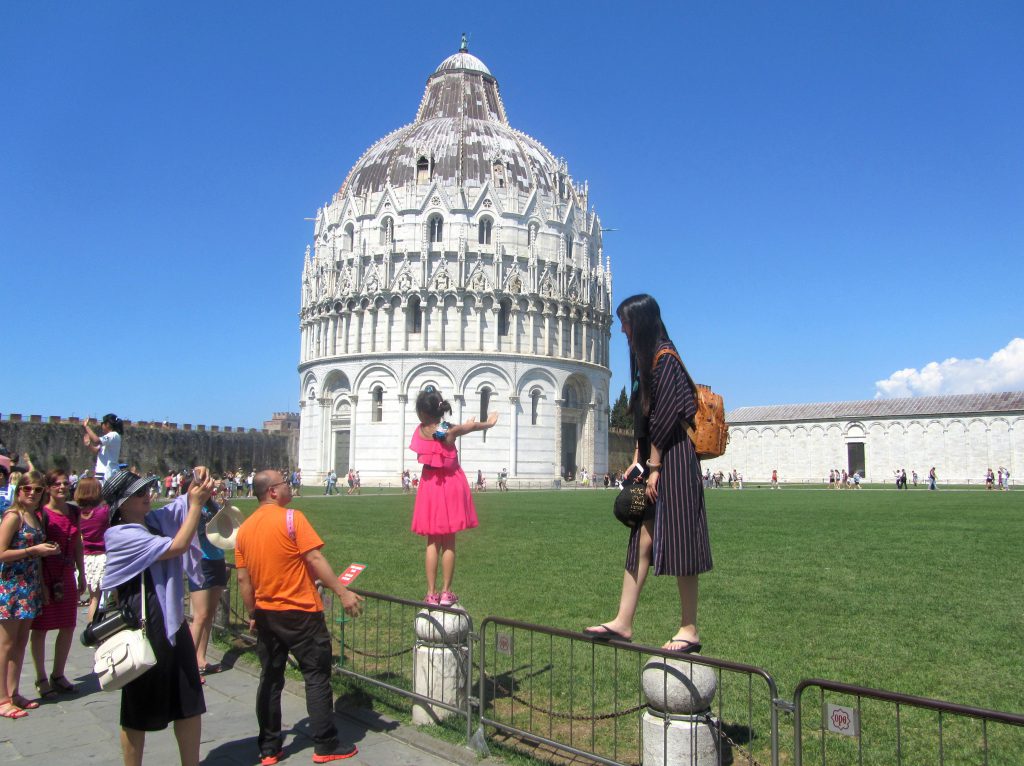
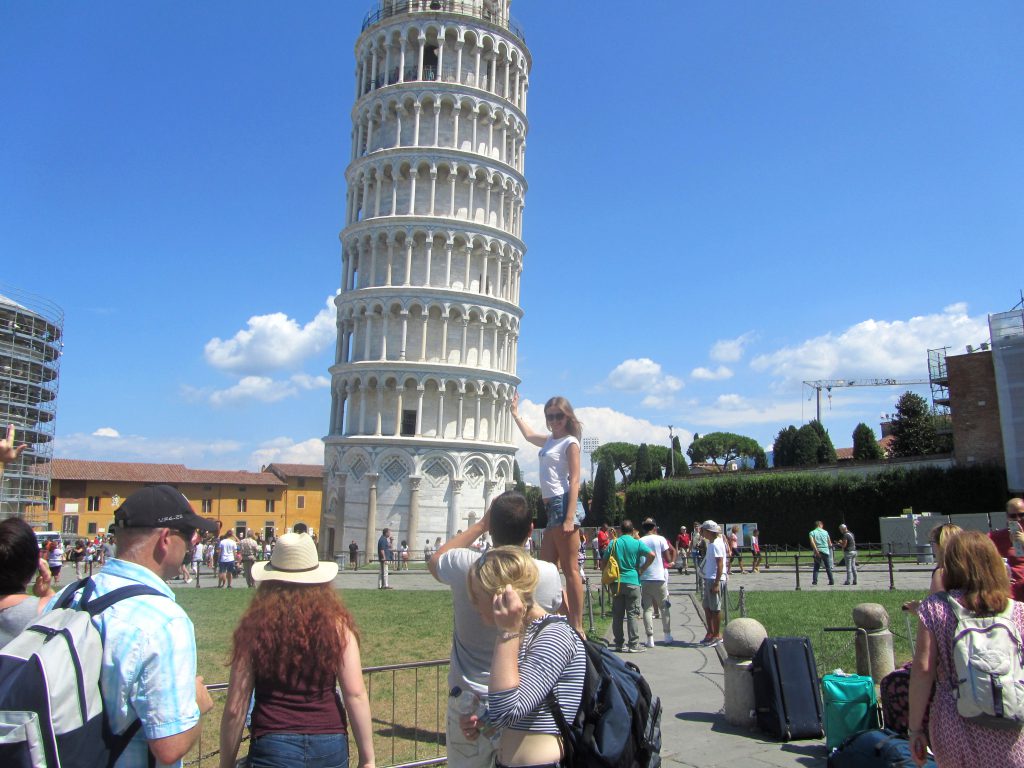
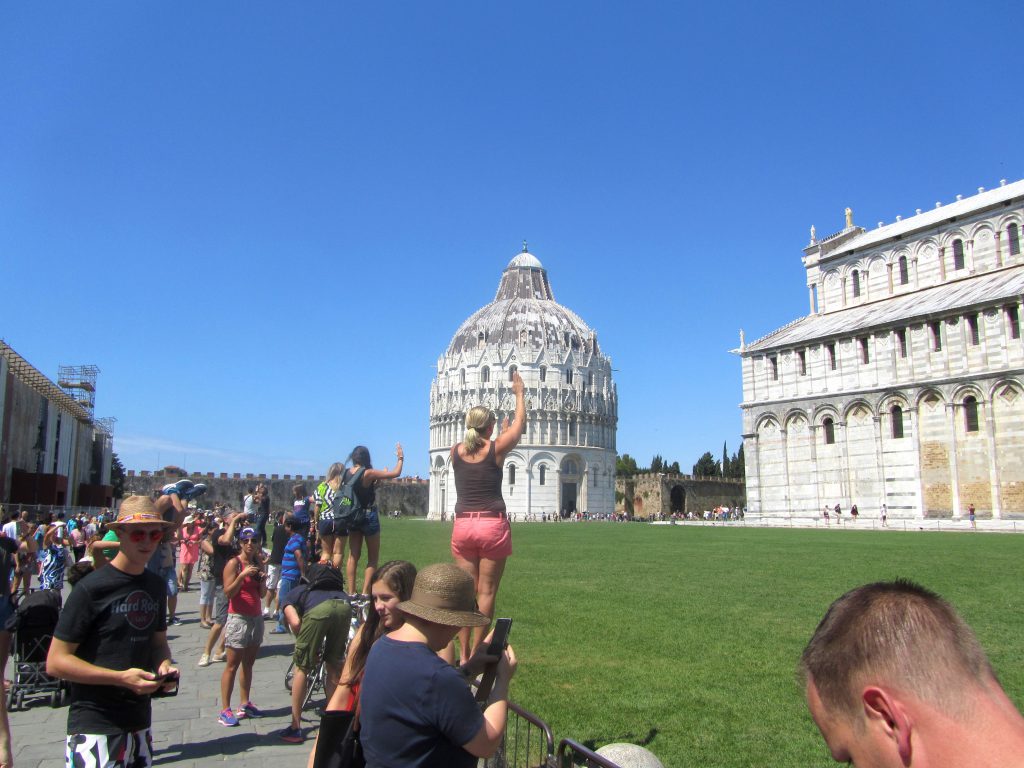
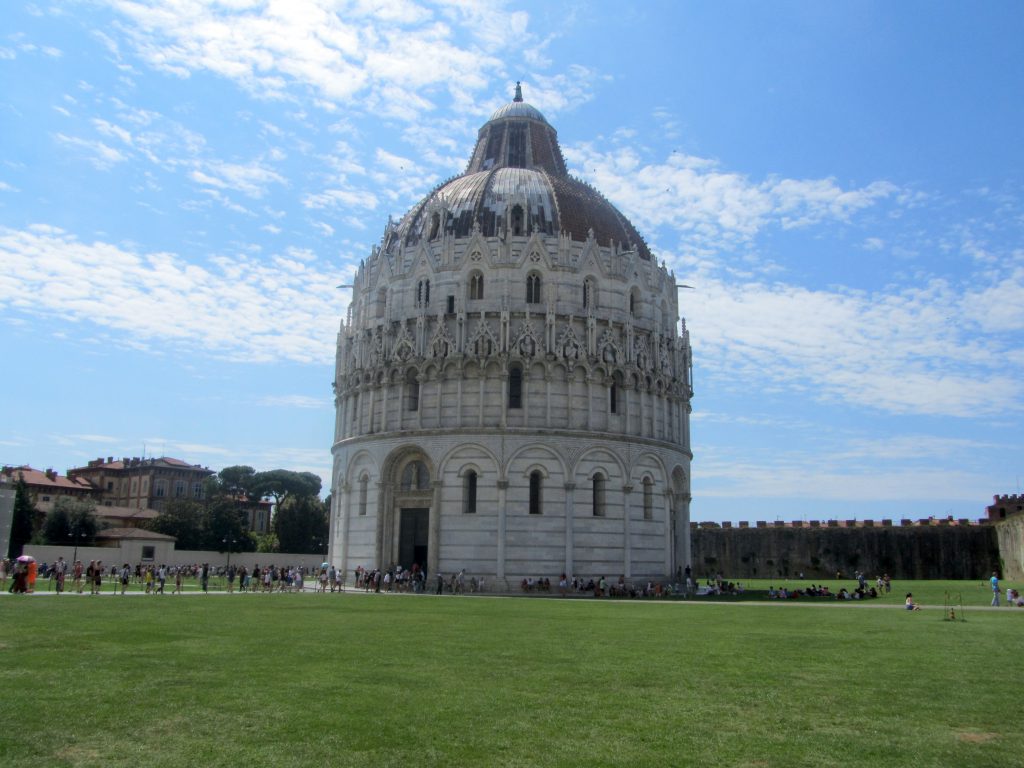
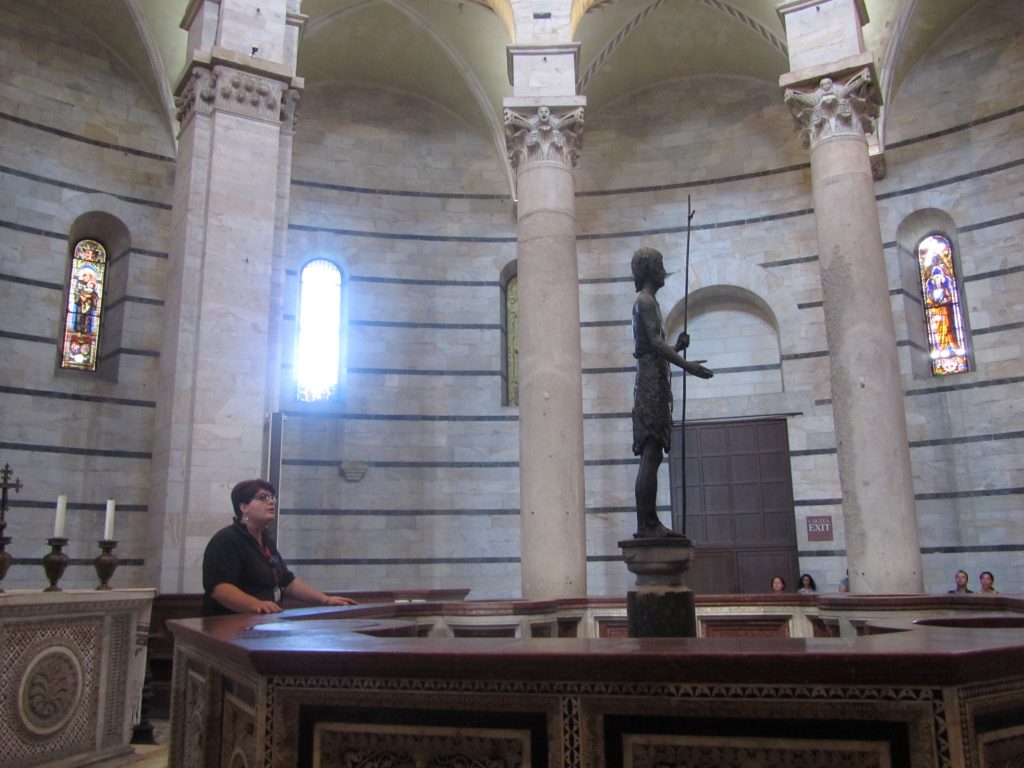
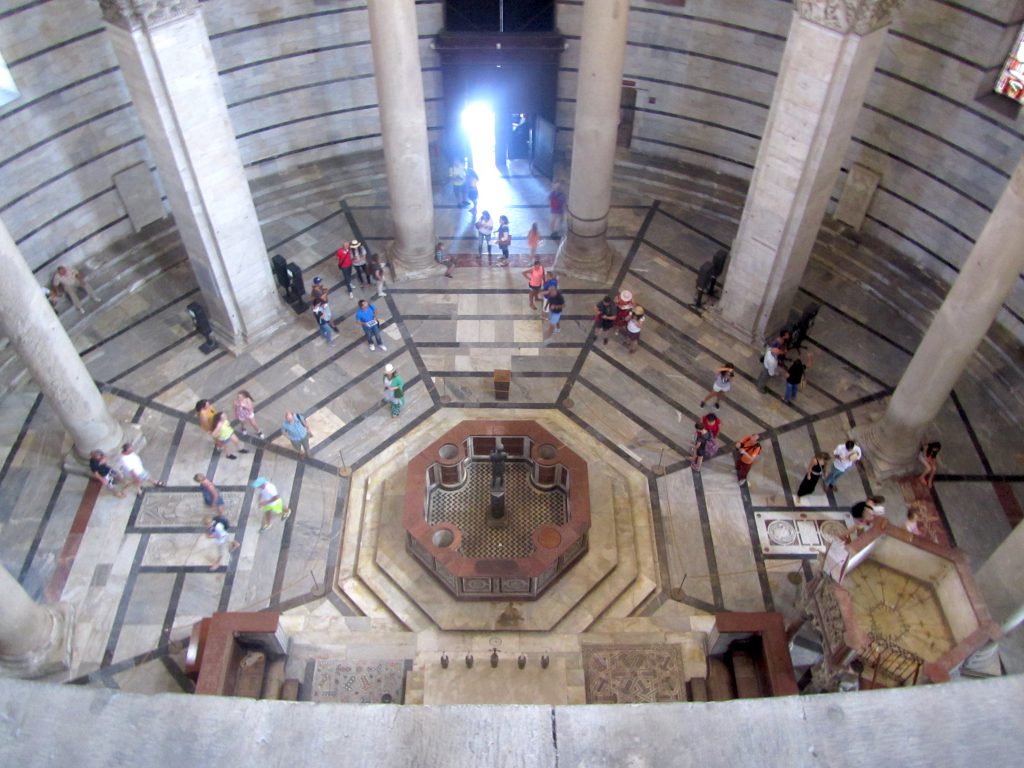
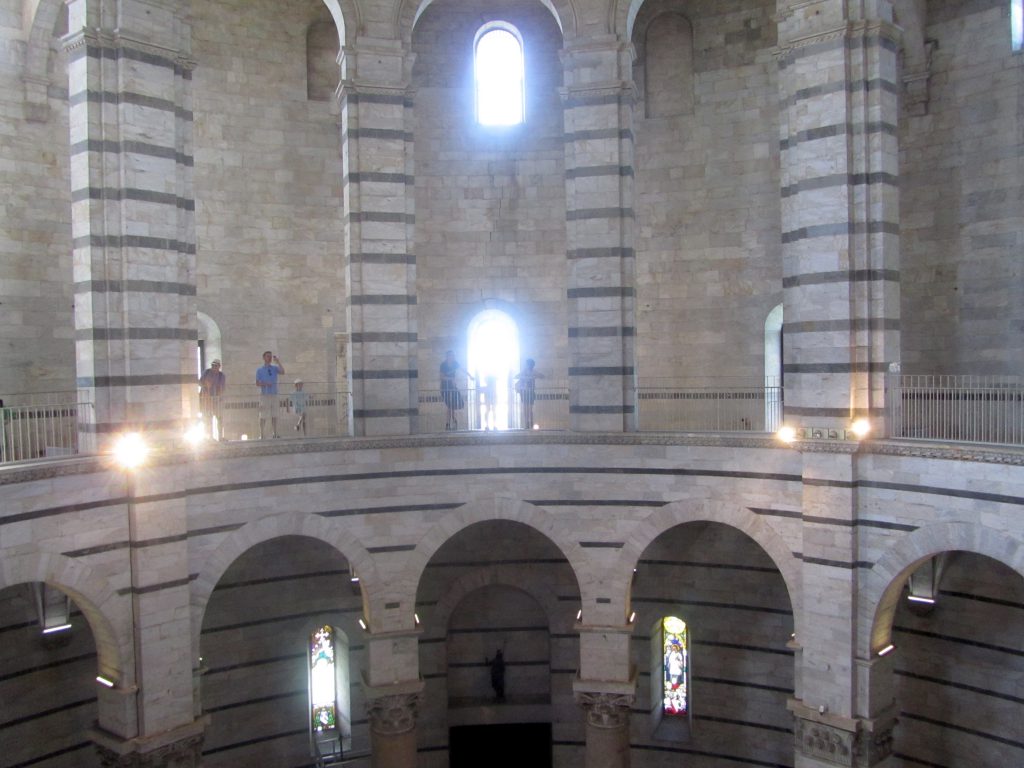
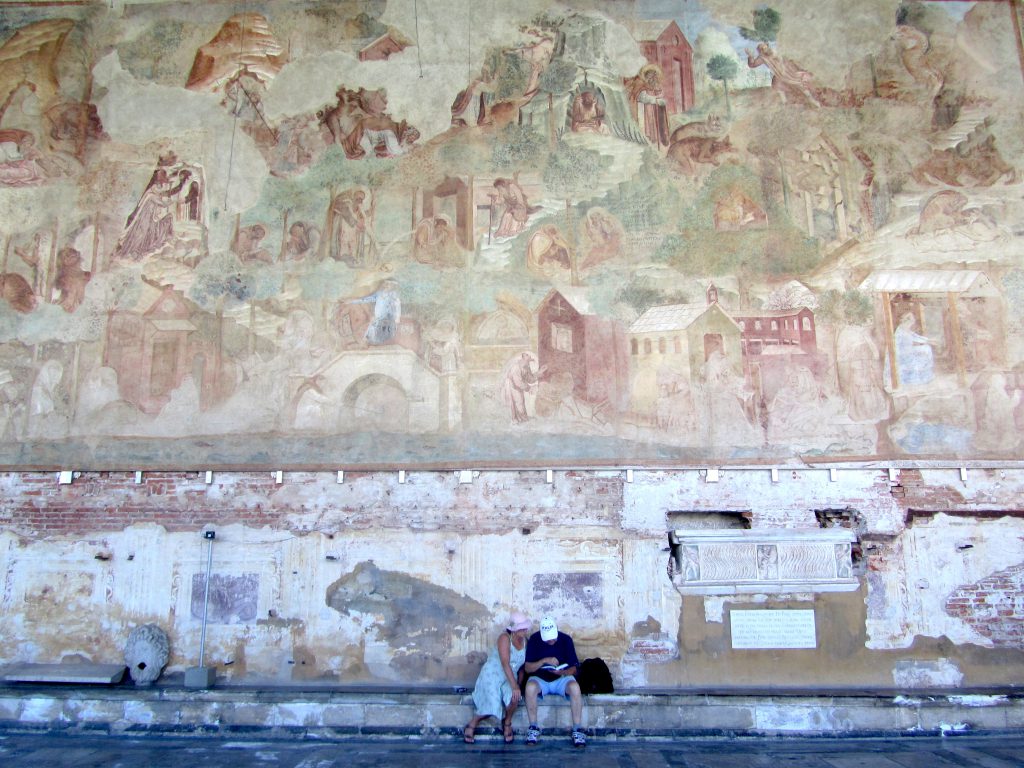
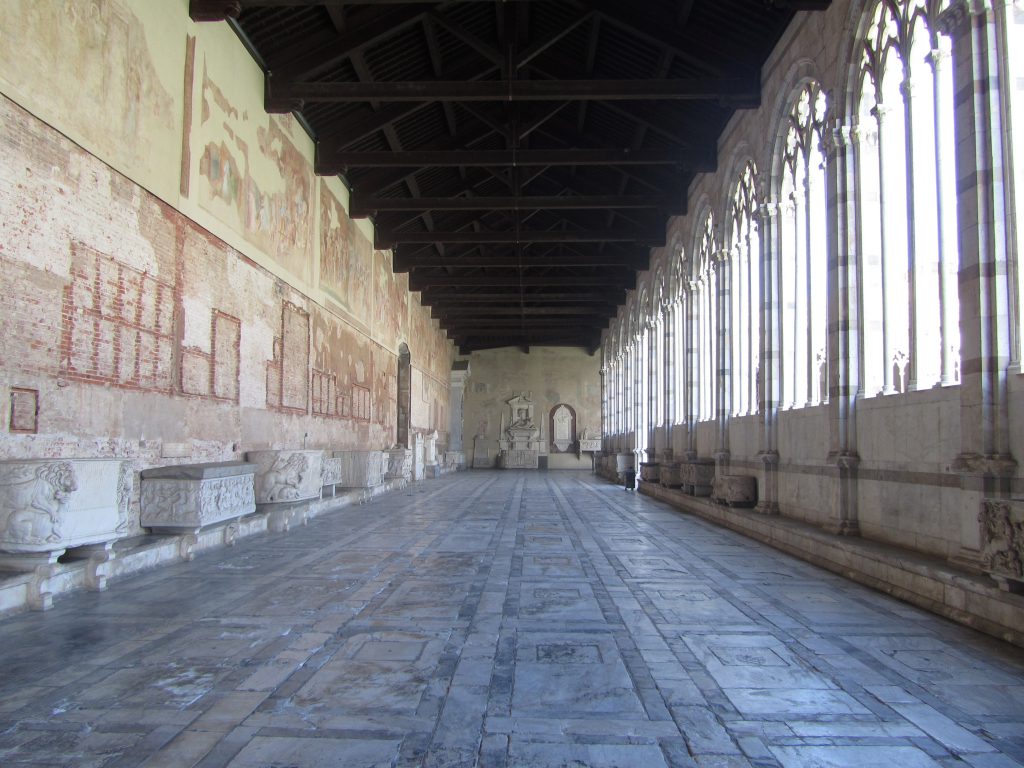
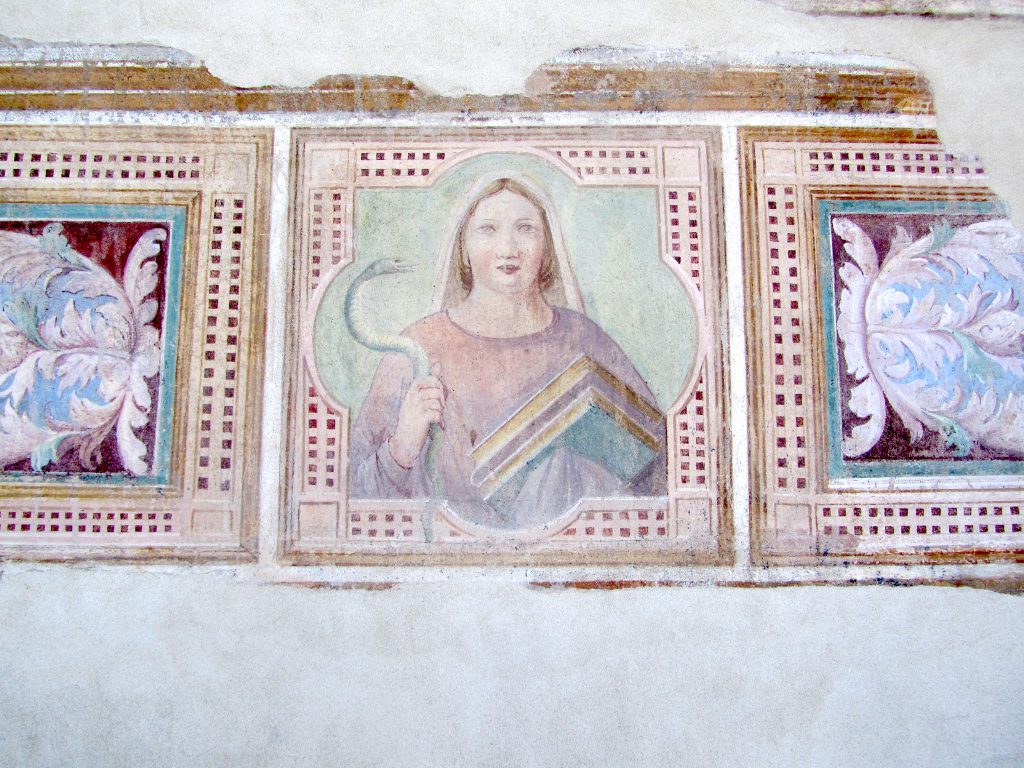
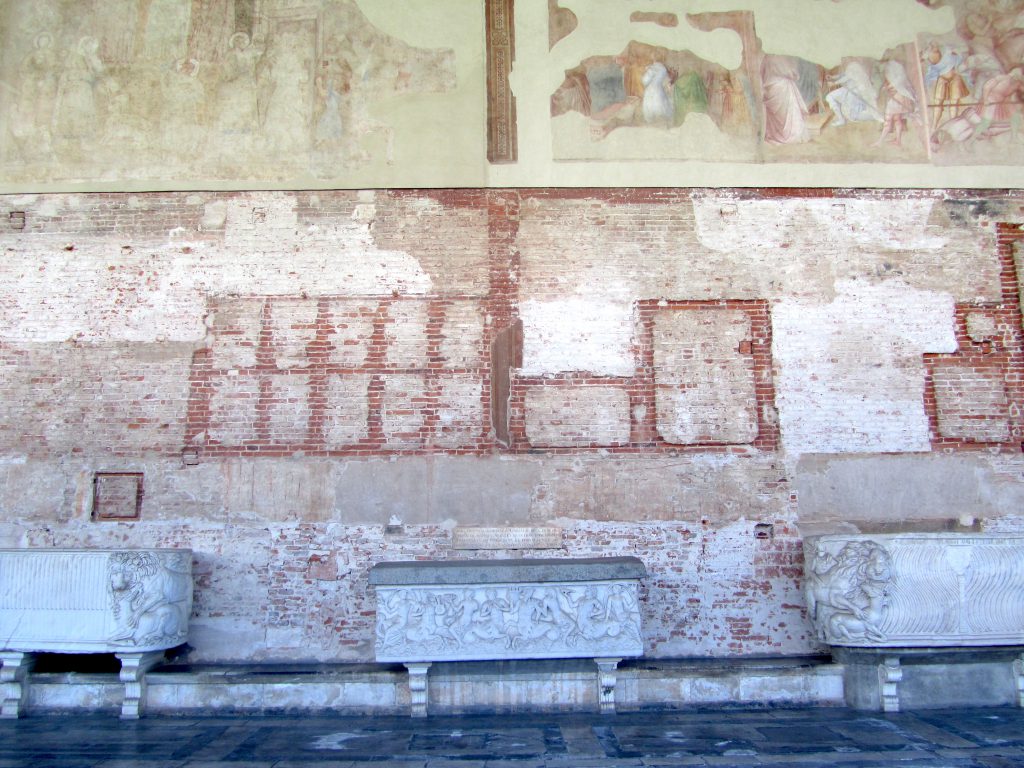
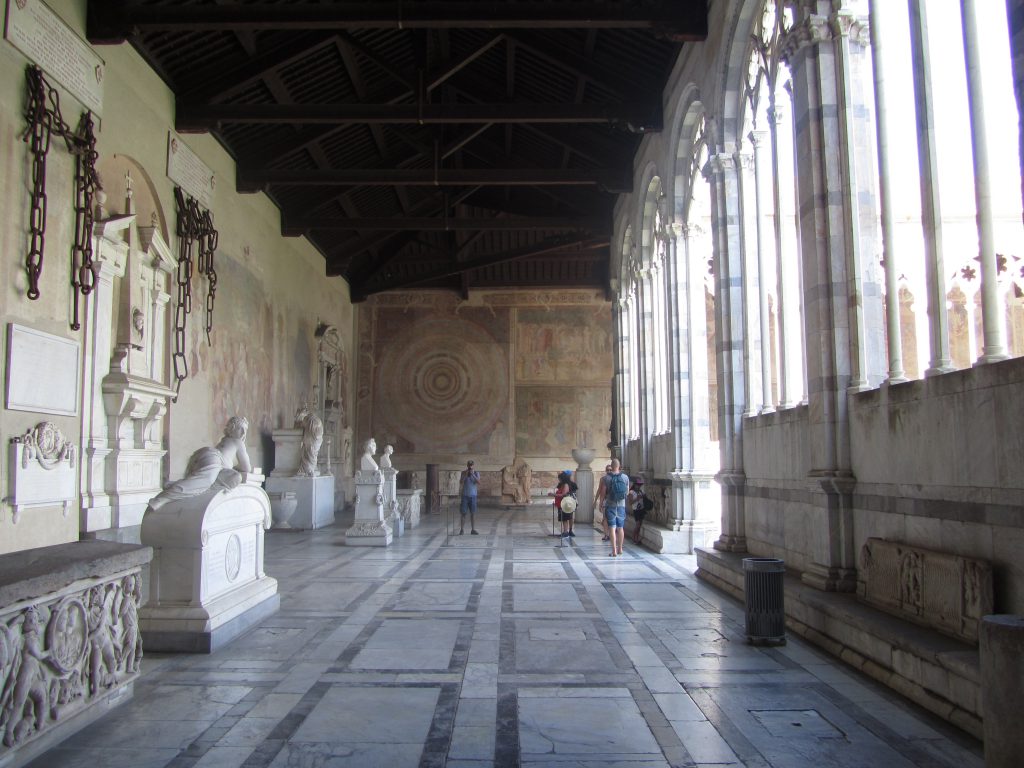
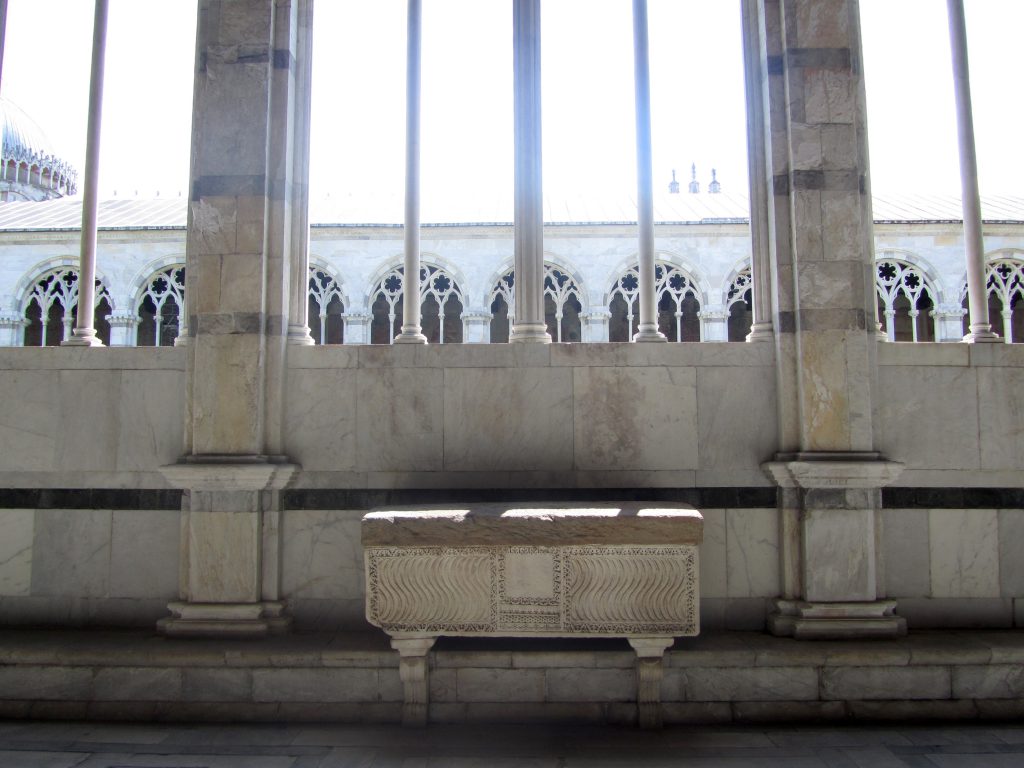
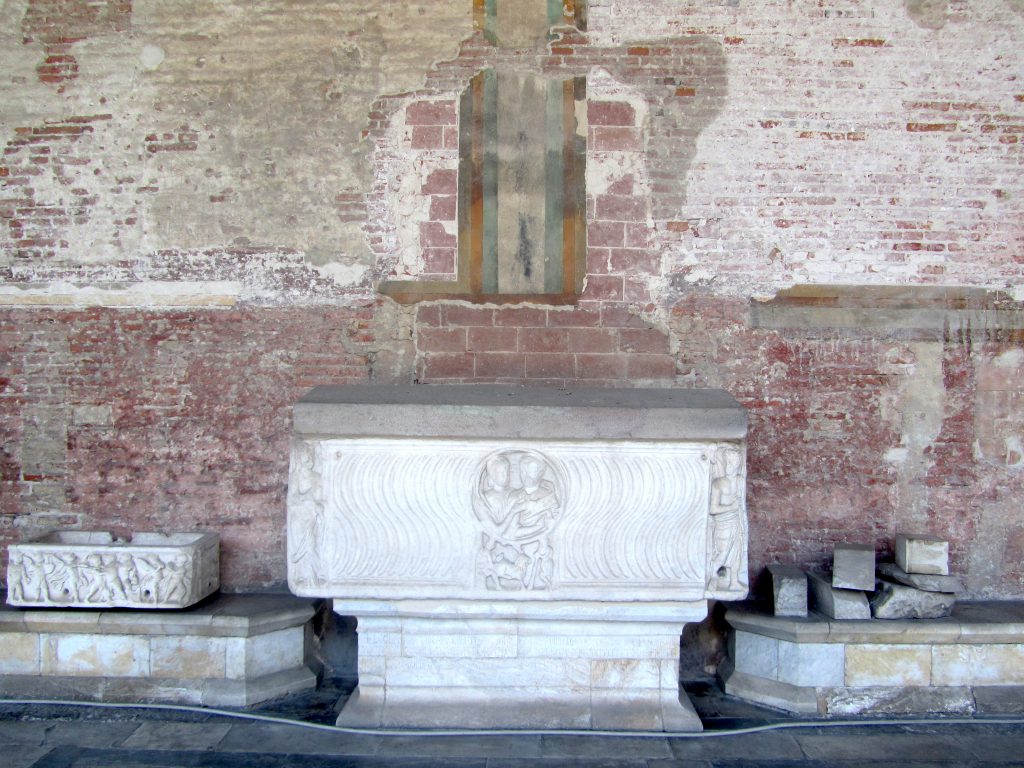
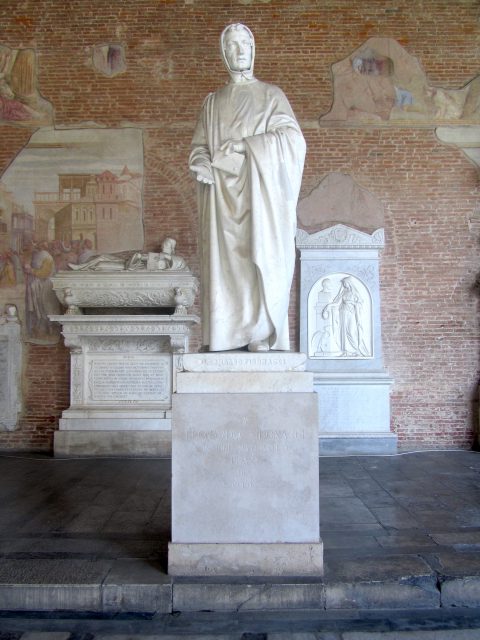
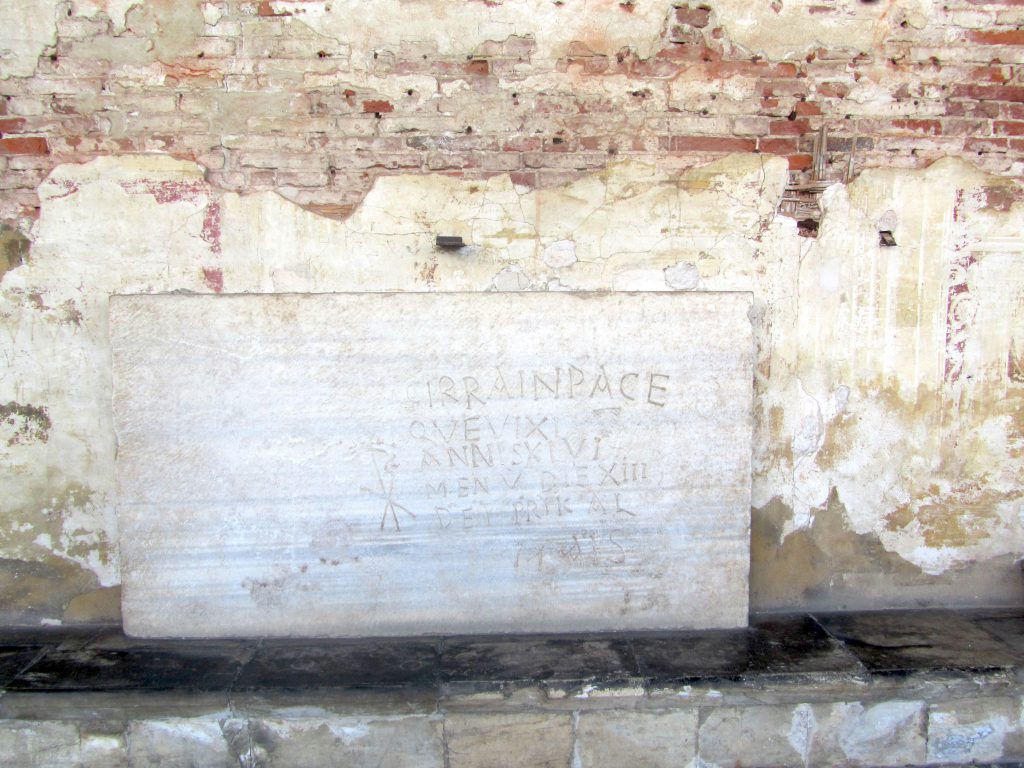
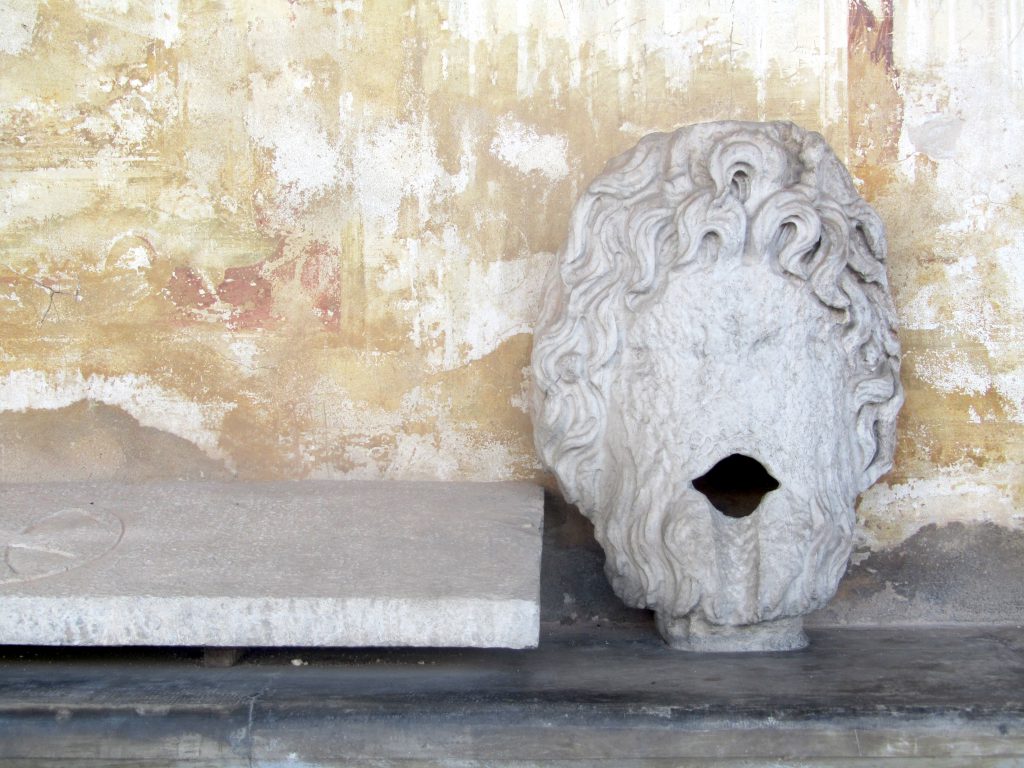
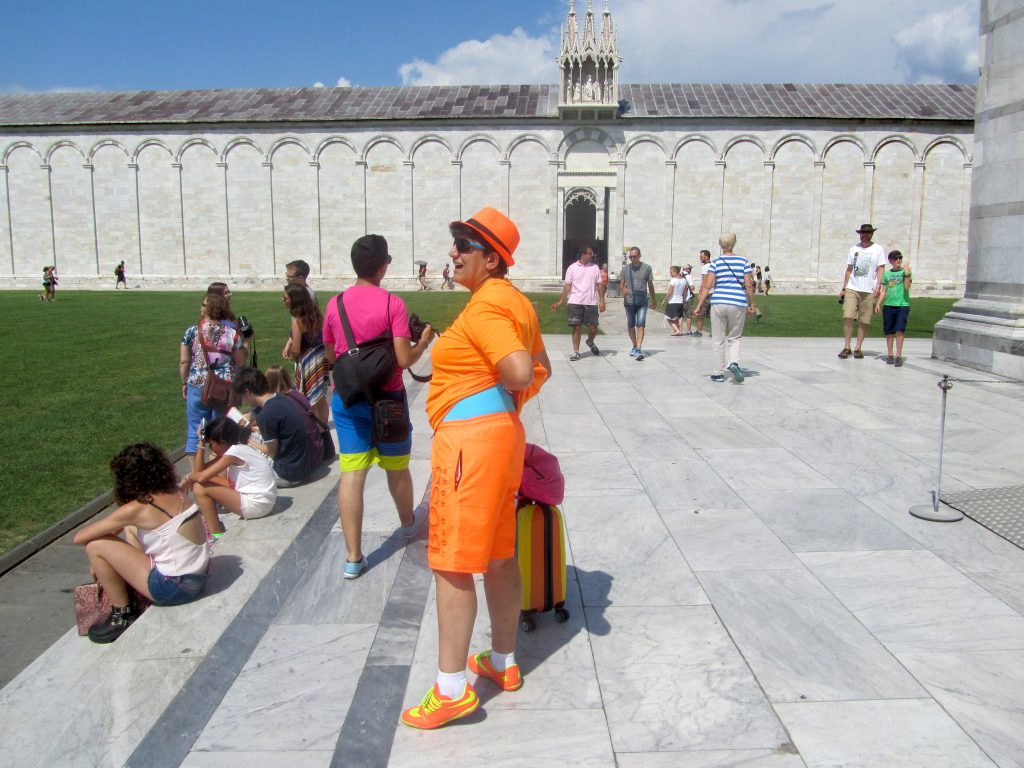
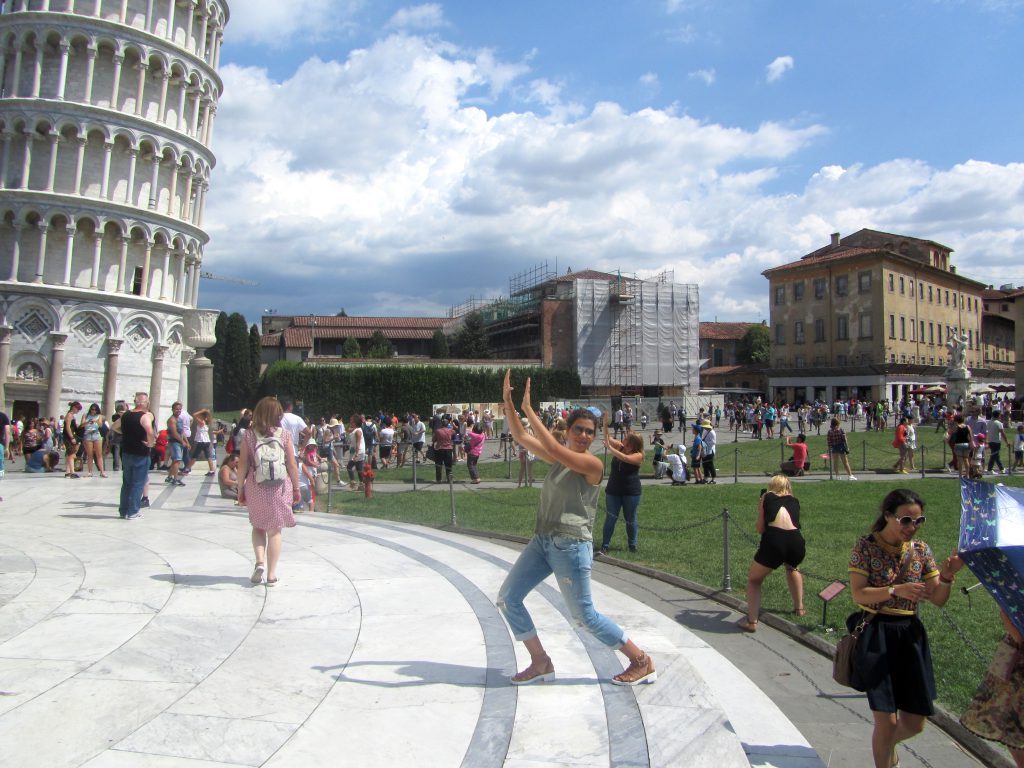
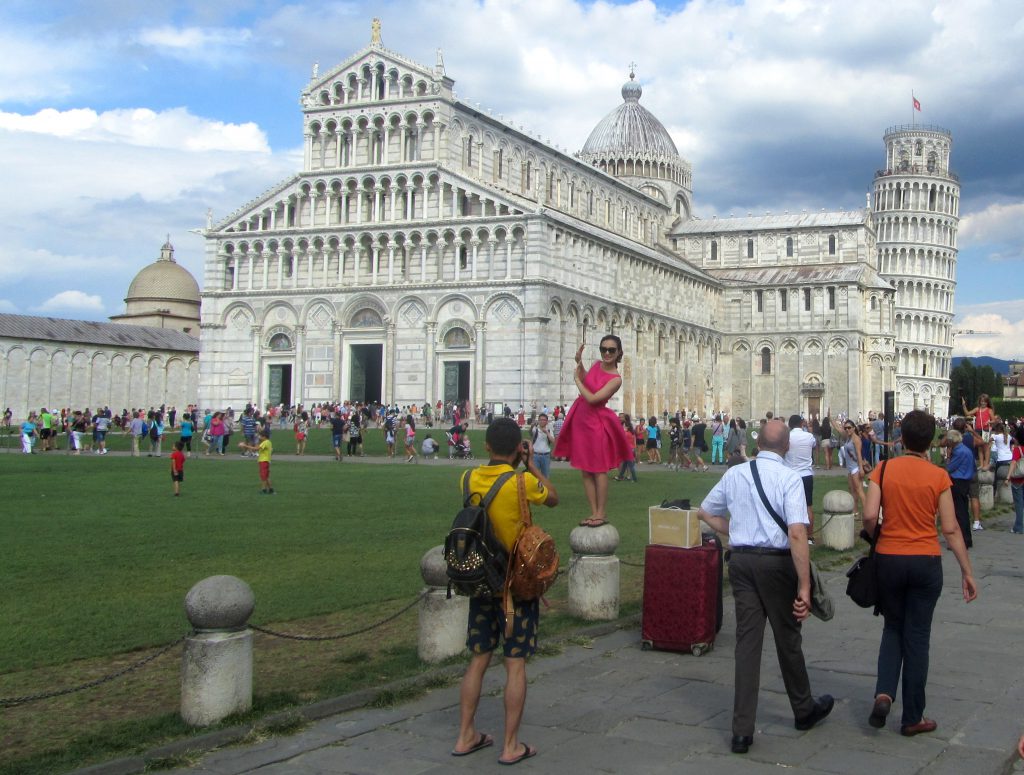
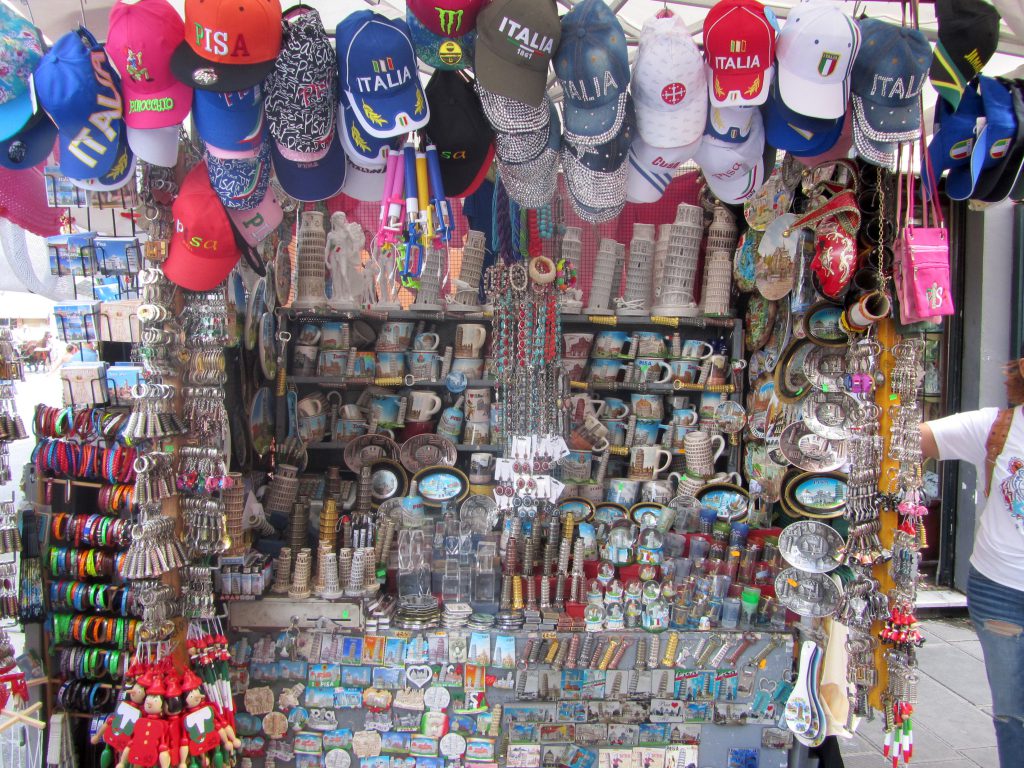
Delightful!
What a treat to have this well-edited trip to the butterflies and landscape, the stones and sculptures of this region, treasures all. Thought of you repeatedly last night when we went to see the David Bickerstaff documentary Painting the Modern Garden, and had to keep looking at the frames of these famous pieces. This post proves you’re enjoying the summer there, so that’s all to the good.
Did wonder who that Orange Man was!
Thanks Pat, but I’m afraid I misled you. These are photos from our trip last year. I’m not in Italy but stuck in the existential gloom of a Britain now cast adrift from Europe. This post was just a distraction! I’ll watch out for your movie, it sounds nicely distracting too. And just in case you were wondering the vision in orange is not me.